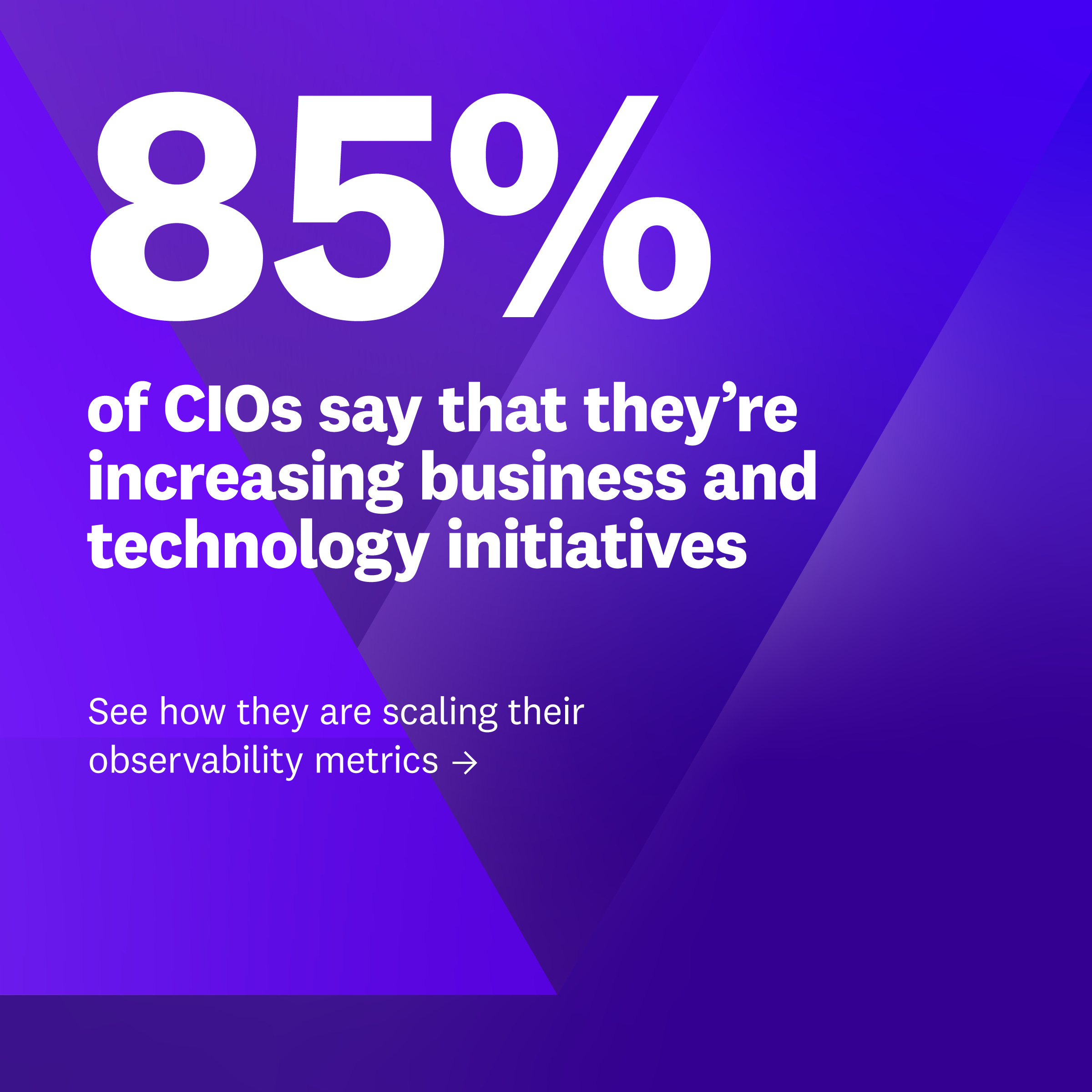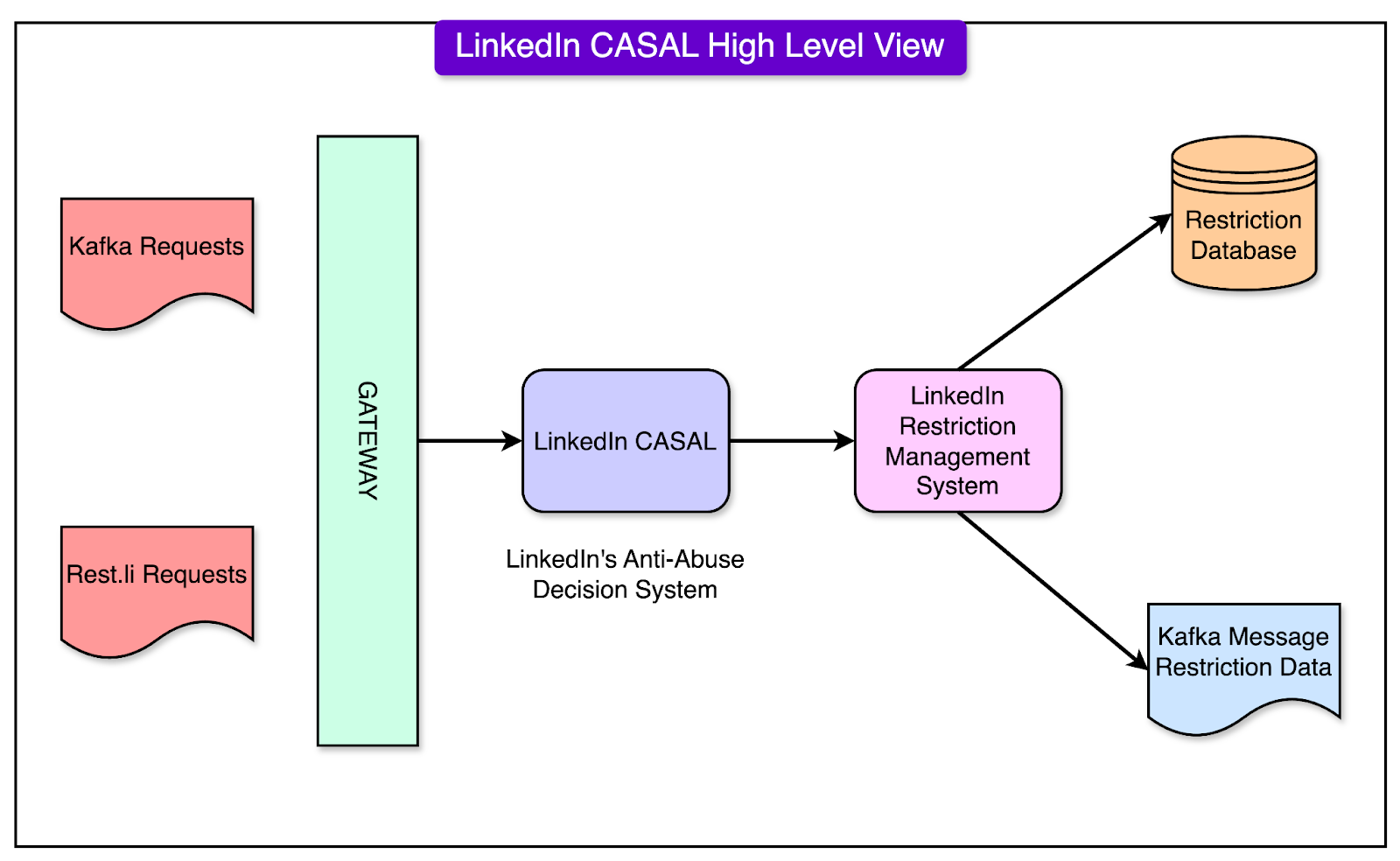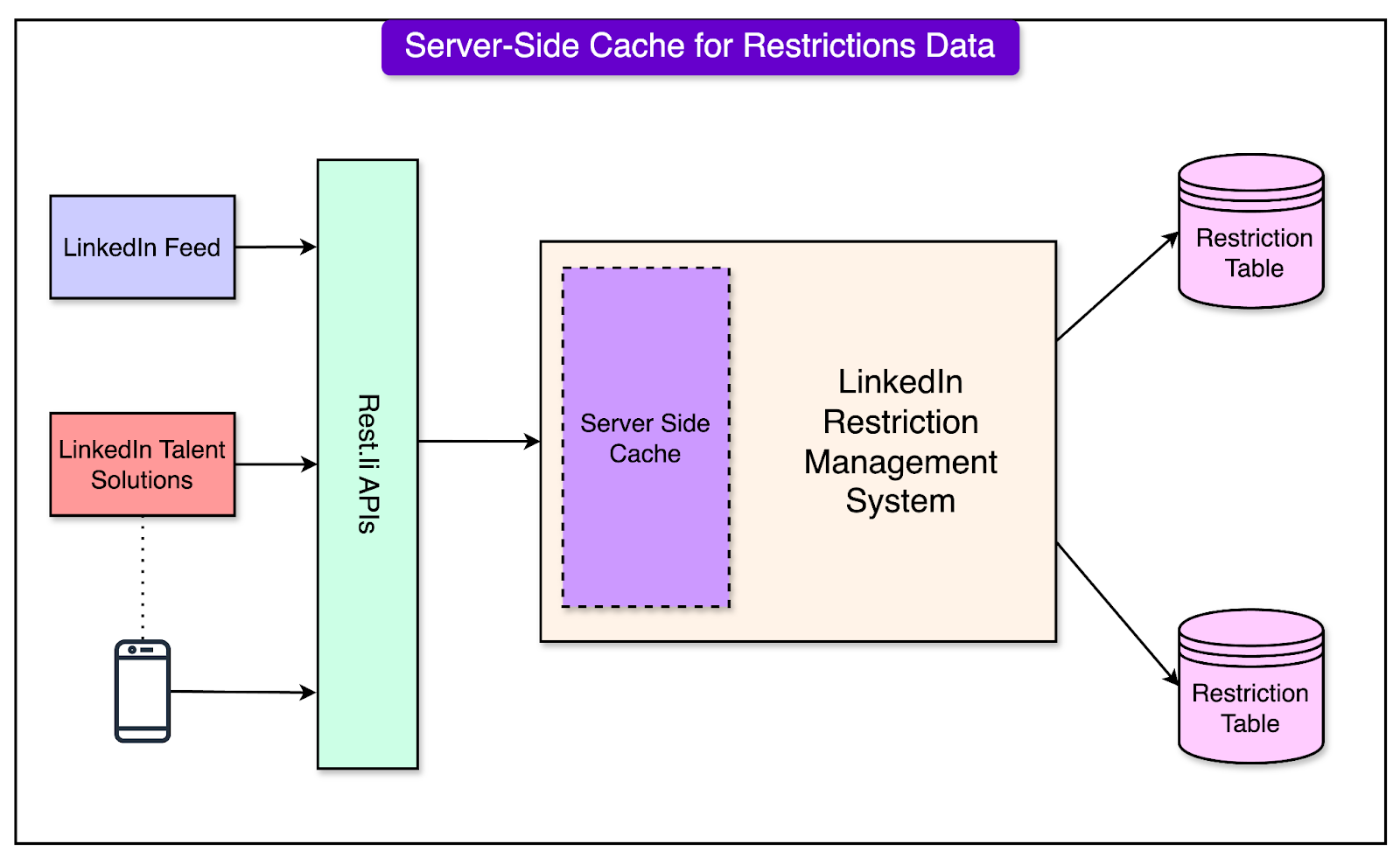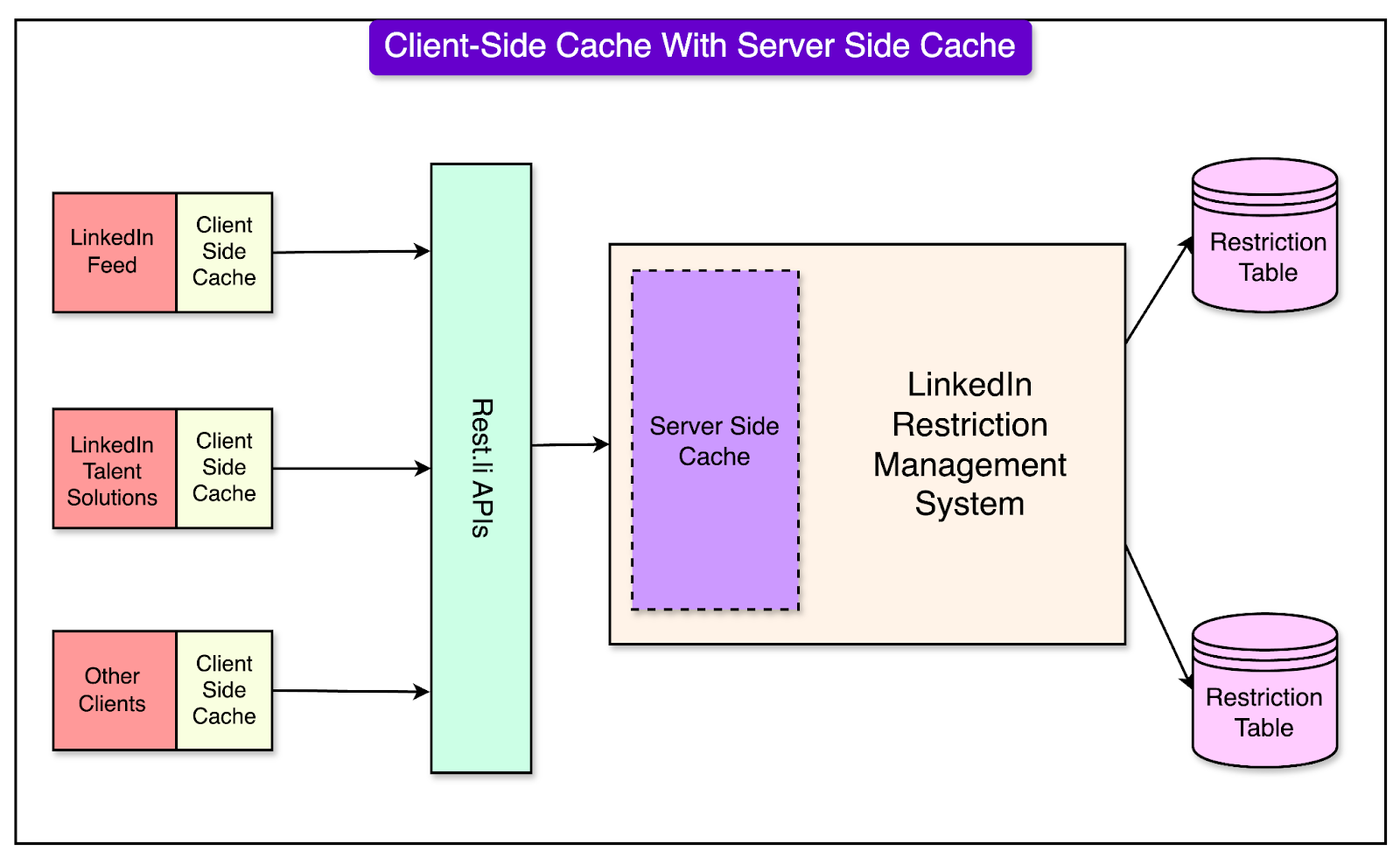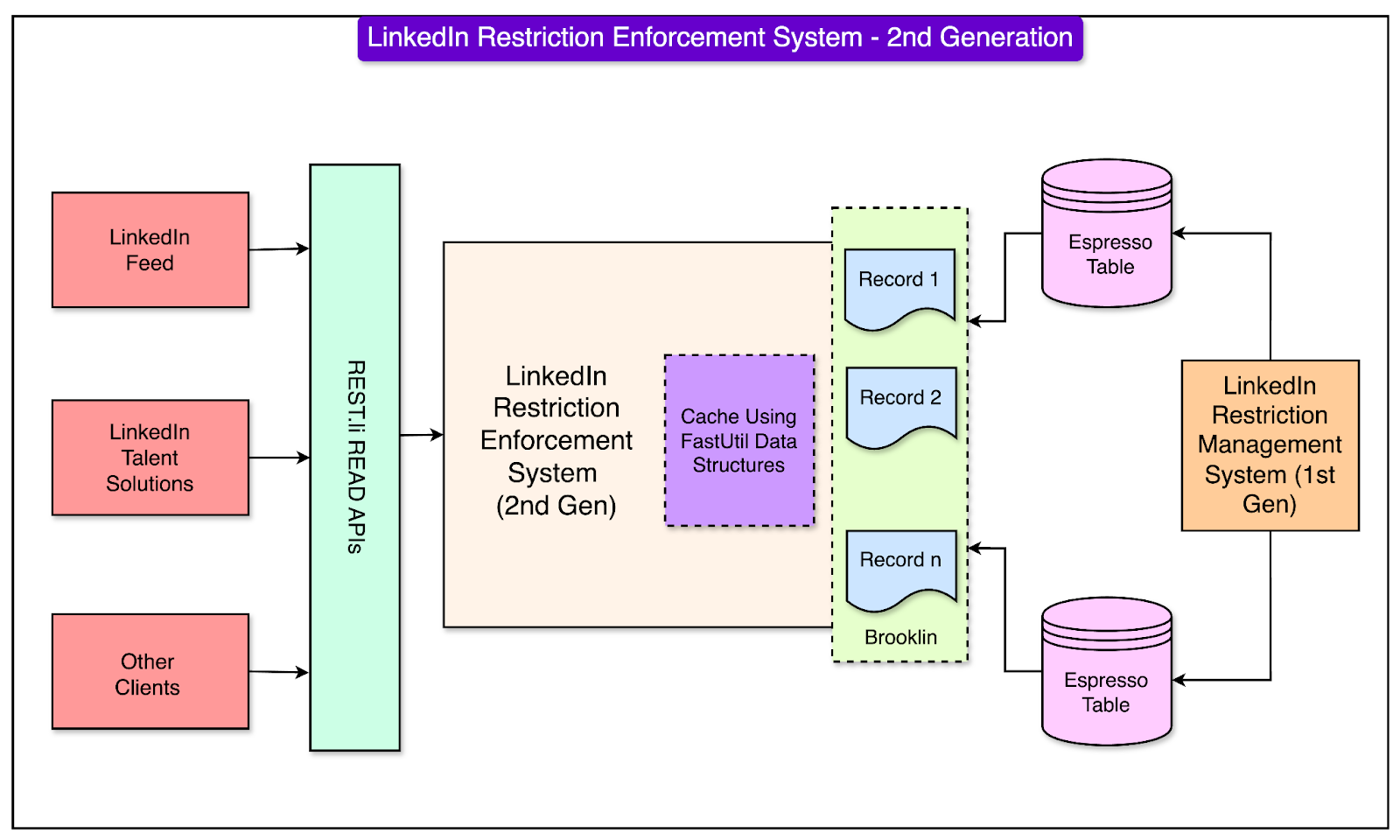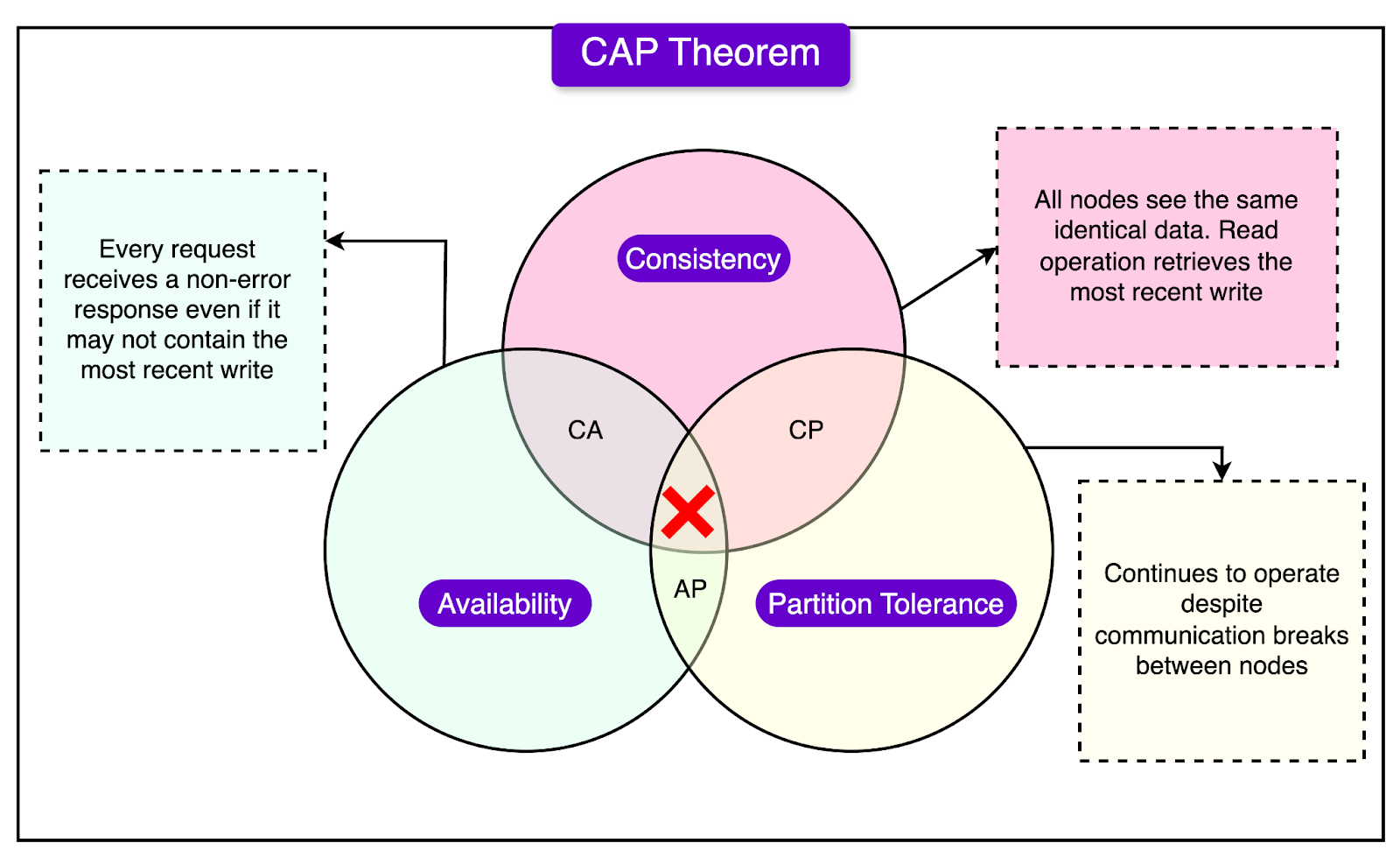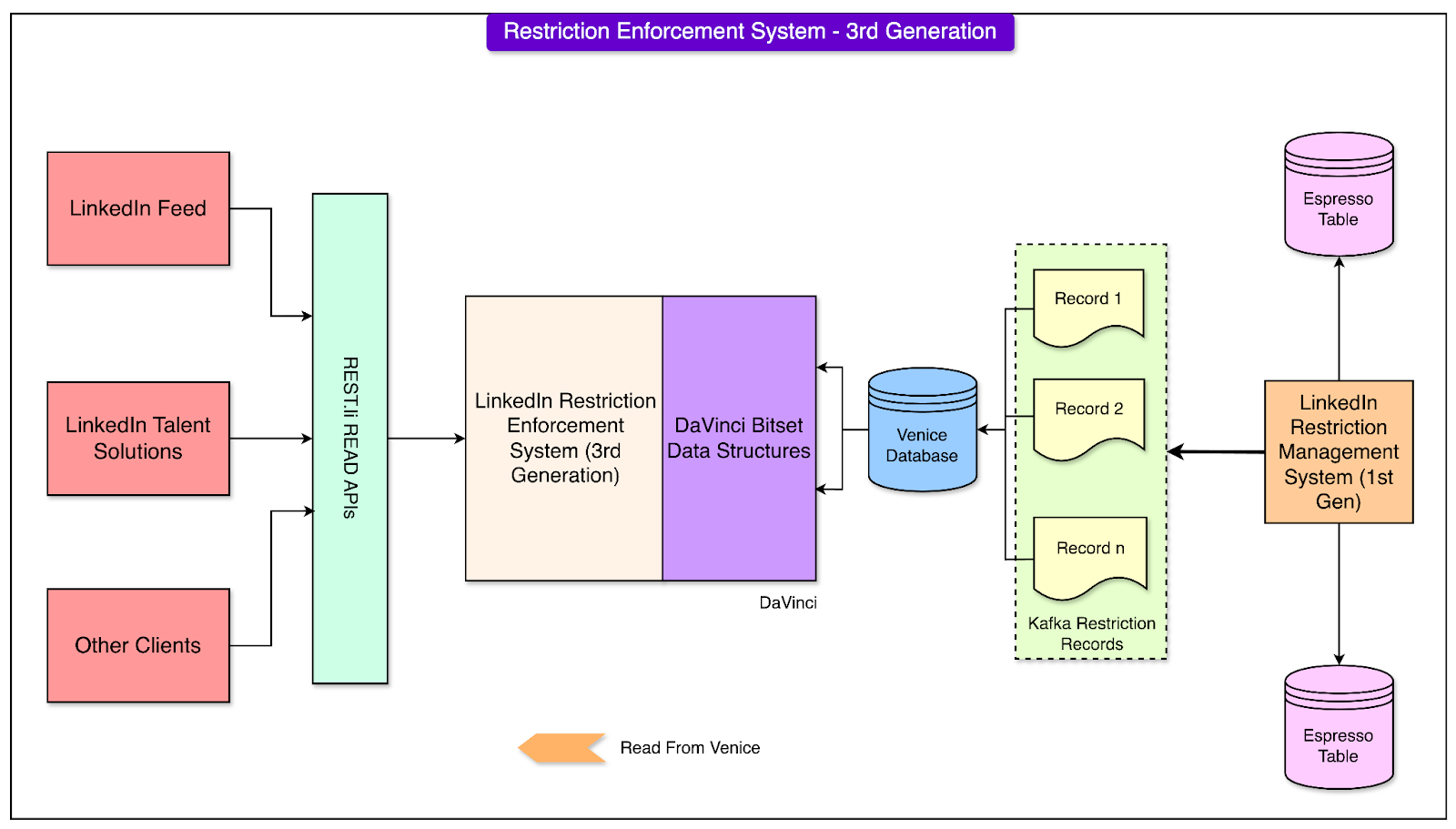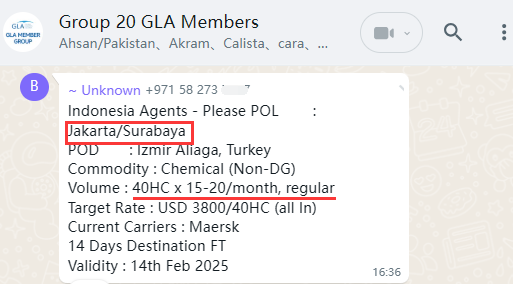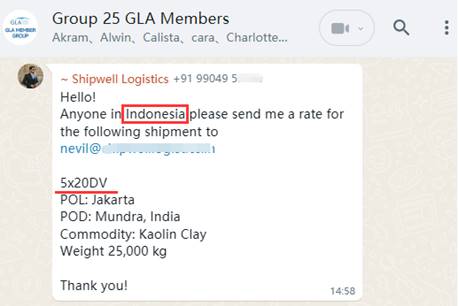Archives
- By thread 5363
-
By date
- June 2021 10
- July 2021 6
- August 2021 20
- September 2021 21
- October 2021 48
- November 2021 40
- December 2021 23
- January 2022 46
- February 2022 80
- March 2022 109
- April 2022 100
- May 2022 97
- June 2022 105
- July 2022 82
- August 2022 95
- September 2022 103
- October 2022 117
- November 2022 115
- December 2022 102
- January 2023 88
- February 2023 90
- March 2023 116
- April 2023 97
- May 2023 159
- June 2023 145
- July 2023 120
- August 2023 90
- September 2023 102
- October 2023 106
- November 2023 100
- December 2023 74
- January 2024 75
- February 2024 75
- March 2024 78
- April 2024 74
- May 2024 108
- June 2024 98
- July 2024 116
- August 2024 134
- September 2024 130
- October 2024 141
- November 2024 171
- December 2024 115
- January 2025 216
- February 2025 140
- March 2025 220
- April 2025 233
- May 2025 239
- June 2025 303
- July 2025 176
-
The newest FHL speaker just got revealed! (replay inside)
Remove your limitsOur newest Funnel Hacking Live 10 speaker is one of the best presenters and trainers on THIS PLANET. Known as the guy who empowers individuals to achieve in a day what others dream in a year…
MYRON GOLDEN!!!
WATCH TODAY’S INTERVIEW REPLAY W/ MYRON GOLDEN HERE →
CEO, best-selling author, YouTube personality, international speaker… Myron has spoken at many Funnel Hacking Live events before, but this time I decided to give him MORE time on stage than I ever have in the past for a specific reason…
I want him to talk about something he is one of the top entrepreneurs in the world at creating: OFFERS!
If you’ve ever seen Myron speak before, then you don’t need me to tell you that he is an absolute genius at creating irresistible, high-value offers his audience just can’t ignore, and now at FHL 10, he’s going to teach you just how he does it!!So many marketers, in an attempt to construct a master offer, end up overcomplicating things and confusing their leads (and we KNOW a confused mind will ALWAYS SAY NO!)
OR beginning entrepreneurs just have no idea where to start when it comes to structuring an expert offer…
Myron has said that, “An offer is nothing more than your ability to describe and deliver the solution to someone else’s problem.”
Drawing from his years of experience and success, Myron is going to BRING DOWN THE HOUSE when he reveals clearly and simply the tactics and strategies he uses to make offers that speak to the heart of those he’s trying to serve, they can’t possibly refuse!!
And now, when you secure your FHL tickets ASAP, you’ll not only learn from one of the best sales strategists of our time, you’ll also receive Myron’s game-changing FREE bonus!!
WATCH TODAY’S INTERVIEW REPLAY W/ MYRON GOLDEN HERE →
I’ll let you find out directly from the video what Myron’s bonus is all about, but I WILL say that this audio program of his usually retails for $500…
But as someone who loves “introducing people to themselves” (their real, top potential selves), Myron is giving away this training for FREE to all FHL ticket holders!!!
REMEMBER: When you secure your FHL 10 ticket ASAP you get access to ALL of the following speaker bonuses –-
Ashley Kirkwood’s Bonus! The “cheat sheet” that will not only help INCREASE your engagement and sales… but can change your entire business model into the one you’ve always wanted!! (Watch Ashley’s bonus reveal HERE→)
-
Eileen Wilder’s Bonus! Hours of coaching content teaching you her framework of persuasion and influence you can use absolutely ANYWHERE to maximize influence and quickly increase sales!! (Watch Eileen’s bonus reveal HERE→)
- Tim Shields’ Bonus! THE essential webinar-building companion that will help you create your expert level, game-changing webinar faster than you ever thought possible! (Watch Tim’s bonus reveal HERE→)
-
Trent Shelton’s Bonus! Become a more confident and successful speaker and overall expert communicator with Trent’s extremely beneficial training that will help you improve in ALL areas of selling! (Watch Trent’s bonus reveal HERE→)
- Armand Morin’s Bonus! Discover the exact formula Armand uses to compound the effectiveness of the “stack and close” system! (Watch Armand’s bonus reveal HERE→)
-
Garrett J. White’s Bonus! Unlock the six skills you need to become a true movement maker in business with Garrett’s 3-day FREE virtual training!! (Watch Garrett’s bonus reveal HERE→)
-
Josiah Grimes’ Bonus! Uncover Josiah’s incredible wealth of knowledge that will work in ANY NICHE! (Watch Josiah’s bonus reveal HERE→)
Andy Elliott’s Bonus! Become a better entrepreneur, become a better spouse, become a better human being!! (Watch Andy’s speaker reveal HERE→)
-
McCall Jones’ Bonus! (Watch McCall’s bonus reveal HERE→) Learn how to apply your unique voice to my (Russell’s) strategies for top-converting presentations and offers!
-
Myron Golden’s Bonus! Start learning how to unlock your top-tier mindset before you’ve even made your first million! (Watch Myron’s bonus reveal HERE→)
- The FREE bonuses of ALL the remaining FHL 10 speakers I have yet to reveal!!
PLEASE REMEMBER that these bonuses WILL NOT be available for much longer. Once they’ve been removed, no future ticket buyers will be able to access them, so get your tickets ASAP!!
I’ll be going live again TOMORROW to reveal another FHL 10 speaker as well as their FREE bonus…
This speaker is no stranger to sharing big ideas to thousands at a time, whether that be on live stages or on her hugely popular podcast!
Keep your eyes peeled for tomorrow’s email with the link to watch the LIVE reveal!!
See you there!
© Etison LLC
By reading this, you agree to all of the following: You understand this to be an expression of opinions and not professional advice. You are solely responsible for the use of any content and hold Etison LLC and all members and affiliates harmless in any event or claim.
If you purchase anything through a link in this email, you should assume that we have an affiliate relationship with the company providing the product or service that you purchase, and that we will be paid in some way. We recommend that you do your own independent research before purchasing anything.
Copyright © 2018+ Etison LLC. All Rights Reserved.
To make sure you keep getting these emails, please add us to your address book or whitelist us. If you don't want to receive any other emails, click on the unsubscribe link below.
Etison LLC
3443 W Bavaria St
Eagle, ID 83616
United States
by "Russell Brunson" <noreply@clickfunnelsnotifications.com> - 12:48 - 23 Jan 2025 -
Ashley Kirkwood’s Bonus! The “cheat sheet” that will not only help INCREASE your engagement and sales… but can change your entire business model into the one you’ve always wanted!! (Watch Ashley’s bonus reveal HERE→)
-
How CEOs can impart organizational identity
Re:think
Crucial questions for CEOs FRESH TAKES ON BIG IDEAS
ON CEO PRIORITIES
Why successful leaders dig deep on identity and purposeKurt Strovink
•
Who are we?
•
Why are we here?
•
What is our agenda?
•
When do we execute our plans?
The “who” is the company’s identity—its personality, values, and culture. The “why” reflects purpose—what is our core mission? The “what” and the “when” correspond to the work plan and initiatives and the timing to execute them. CEOs want to quickly establish accountability and execute their strategy, which is obviously important for results. However, our observation after working with leaders is that passing over the first two W’s to focus on the last two can be problematic and misses a real opportunity.
Organizational success comes from leaders spending more time upstream with the foundational questions of purpose and identity, which are particularly important for companies stocked with self-propelled talent. These are people who, when told where the goal line is, figure out how to get there. Purpose and identity are fuel for performance, and they’ve only gotten more important in an era of nonstop change and increased yearning for meaning in the workplace.
CEOs should want to inspire and motivate all their people. There’s an old story about John F. Kennedy touring the NASA facilities in Cape Canaveral. He noticed a janitor with a broom nearby. He asked what the man was doing for NASA, and the janitor replied that he was helping to put a man on the moon. He didn’t view his contribution as fractional; he felt he was doing his part so the overall mission could succeed.“Purpose and identity are fuel for performance, and they’ve only gotten more important in an era of nonstop change.”
We’ve seen this same kind of widespread shared vision play out at successful hospital systems where all employees—not just the doctors and nurses—feel they are healing and caring for patients. When hospital leaders have a vision of patient care that is integrative, employee experience improves, as does customer experience.
These are examples of how the “who” and the “why” combine to give a strong sense of organizational identity. Identities, by their nature, are not partial; they are holistic. They don’t apply to only 25 percent or 50 percent of employees. It’s 100 percent or nothing.
To spread their vision, leaders can spotlight people who are living the goal successfully. Senior leaders can reach out to those on the front line and say, “I heard you did this. Good stuff, keep it going, and thank you for setting an example.” Leaders can also teach. They can say, “Look, we’re continuing to get better at this. We keep getting closer and closer, but it’s the striving to be great that makes us great.” If they emphasize improvement, as well as performance, people will be more motivated to stretch and strive.
Finally, leaders can serve as role models for this approach themselves. They should be curious, hunting for new ways of doing things. They can refine their own script, not relying on a stump speech that is provided to them and that they repeat over and over. They can evolve it as they learn, enriching their narrative with employees, suppliers, customers, and the board.
We suggest that leaders take the time to dwell on identity and purpose. If they skip over those things and focus only on operational factors, they leave a lot on the sidelines because people just aren’t going to be as excited and committed as they could be. This is particularly true in high-talent organizations, where people don’t necessarily listen to authority alone (the “do it because I said so” approach). What motivates them is having something that they believe in: an interpretation of who they are and why they’re here that resonates.
In any human endeavor, it isn’t just about a transaction but about depth of meaning. Reasons, values, mission, and how people see themselves—and why they do what they do—matter. We see this in our work with companies that could have gone down the path of making more money outside of their core mission, but they decided against it. And they’re thriving, whether it’s in entertainment or healthcare or other sectors.
Finally, the four W’s are a useful mnemonic device for CEOs to quickly pull up and ask, “Am I leading in a way that works well across all of these? Or am I at 10-10-40-40?” Obviously, if they’re at 50-50-0-0, that’s also a problem. The point is to recalibrate and put more time and energy where it’s needed while vowing not to skip over “who” and “why.” Balance is the key.ABOUT THIS AUTHOR
Kurt Strovink is a senior partner in McKinsey’s New York office.
MORE FROM THIS AUTHOR
UP NEXT
Alex Camp on creating healthy cultures
Most leaders understand the importance of culture in achieving organizational goals, but many are still unsure about how to make the best parts of their cultures stick. Rather than relying on the informal transfer of rules and rituals, they need to be more intentional about culture—here’s why.
This email contains information about McKinsey’s research, insights, services, or events. By opening our emails or clicking on links, you agree to our use of cookies and web tracking technology. For more information on how we use and protect your information, please review our privacy policy.
You received this email because you subscribed to our McKinsey Quarterly alert list.
Copyright © 2025 | McKinsey & Company, 3 World Trade Center, 175 Greenwich Street, New York, NY 10007
by "McKinsey Quarterly" <publishing@email.mckinsey.com> - 02:48 - 22 Jan 2025 -
[FHL] NEW Speaker Interview (more free bonuses!)
He’s a closing legend… you don’t want to miss thisMy next guest speaker is an entrepreneur and a dear friend who I've turned to many times for advice on how to break through my own limitations.
That’s the thing...
We ALL limit ourselves.
Doesn’t matter if you’re just starting out selling online or you’ve been at it for 20+ years…
We limit ourselves all the time, AND, we don’t even realize we’re doing it… while we’re doing it.
His name is Myron Golden and he’s the "limitation eliminator”... able to help driven, high-achieving entrepreneurs like yourself DESTROY your own limiting beliefs, see your potential, and rise up to face the new challenges with a new (and improved) mindset.
He’s been a Funnel Hacking LIVE alumni and I can’t wait to have him back… one last time in Vegas!!
GO WATCH TODAY’S INTERVIEW W/ MYRON GOLDEN @ 2 PM ET →
I’ll just be honest with you: when you listen and apply what Myron teaches, you become richer.
Richer in finances… in relationships… in career… in life.
So if you want to grow and become the BEST version of yourself, then join me today for my interview with Myron Golden!
GO WATCH TODAY’S INTERVIEW W/ MYRON GOLDEN @ 2 PM ET →
OH… one more thing.
Did you hear about the “bed situation” in Vegas…?
Yeah, so I guess Vegas… ran out of beds??
Apparently, there’s only one more bed and they’re doing a Thunderdome battle for it. Whoever wins gets to sleep on a nice bed.
Weird, right?
Or not… it is Vegas afterall. ;)
OK OK OK… I’m kidding - (or am I…? ;)
But you know what DOES feel a little “Thunderdome-y”...?
Trying to find a hotel room right now, especially when FHL is right around the corner…
If you look now, the prices are BANANAS high… AND if you did do an Airbnb, you have to go so far out of Vegas, it’ll take you a good chunk of time back to get to the event center.
Why do all of that nonsense… when you can simply go here and book your room with us! →
Not only will you be among your fellow Funnel Hackers, you’ll also SAVE some moolah AND get a nice hotel room with your own bed.
Sounds like a win-win if you ask me…
Of course there’s another problemo…
See, we are LIMITED on the number of rooms to give out with the exclusive discount.
Once these rooms are gone, that’s it…
So don’t wait!!! Get your room and be among your people!
BOOK YOUR ROOM NOW & BE AMONG FUNNEL HACKERS →
OK that’s it!
Russell Brunson
P.S. Don’t forget, you’re just one funnel away…
© Etison LLC
By reading this, you agree to all of the following: You understand this to be an expression of opinions and not professional advice. You are solely responsible for the use of any content and hold Etison LLC and all members and affiliates harmless in any event or claim.
If you purchase anything through a link in this email, you should assume that we have an affiliate relationship with the company providing the product or service that you purchase, and that we will be paid in some way. We recommend that you do your own independent research before purchasing anything.
Copyright © 2018+ Etison LLC. All Rights Reserved.
To make sure you keep getting these emails, please add us to your address book or whitelist us. If you don't want to receive any other emails, click on the unsubscribe link below.
Etison LLC
3443 W Bavaria St
Eagle, ID 83616
United States
by "Russell Brunson" <noreply@clickfunnelsnotifications.com> - 12:26 - 22 Jan 2025 -
You’re invited: Simplify AWS and Azure Monitoring with New Relic
New Relic

Simplify AWS and Azure Monitoring with New Relic
Managing the performance and uptime of your AWS and Azure environments doesn’t have to be overwhelming. With New Relic’s Intelligent Observability platform, you can monitor and troubleshoot applications, infrastructure, and services—all in one place.
Join our upcoming webinars to find out how to use the New Relic Intelligent Observability platform to monitor & troubleshoot apps, infrastructure & services with automatic relationship mapping, pre-built dashboards & AI-powered anomaly detection.Improve Azure performance and manage cloud costsFebruary 4, 10am GMT | 11am CET
We’ll show you how to get started with New Relic directly in the Azure portal and easily onboard all your data with 100+ Azure quickstarts.
Register Now >
One-step Observability for AWSFebruary 6, 10am GMT | 11am CET
With our one-step AWS onboarding, you can automate instrumentation for logs and metrics using CloudFormation templates and agentless EC2 monitoring.
Register Now >
View in browser
This email was sent to info@learn.odoo.com. Update your email preferences.For information about our privacy practices, see our Privacy Policy.
Need to contact New Relic? You can chat or call us at +44 20 3859 9190
Strand Bridge House, 138-142 Strand, London WC2R 1HH
© 2025 New Relic, Inc. All rights reserved. New Relic logo are trademarks of New Relic, Inc.
by "New Relic" <emeamarketing@newrelic.com> - 05:06 - 22 Jan 2025 -
Unlock My Biggest Marketing Secrets (for Free!)
Ready to learn how to market smarter, faster, and with more profit?Hey...
Let me ask you a question: What if you could sit in a room with a mentor who's built an empire from scratch—and get all their marketing secrets for free?
That’s exactly what I created with the Marketing Secrets Podcast.
Twice a week, I share the behind-the-scenes of what’s working RIGHT NOW in online marketing. These aren’t theories. They’re tested strategies that helped me go from struggling in college to co-founding ClickFunnels, a $100M company used by over 100,000 entrepreneurs.
Here’s a sneak peek of what you’ll discover:
✔ The secret to getting your dream customers to chase YOU.
✔ How to turn traffic into raving, paying fans.
✔ My proven frameworks for scaling any business online.The best part? You can listen for FREE right now.
🎧 Subscribe and Download on Your Favorite Platform:
Apple | Spotify | CastBox | PandoraDon’t wait—your next breakthrough could be one episode away.
To your success,
RussellMarketing Secrets
3443 W Bavaria St
Eagle, ID 83616
United States
by "Russell Brunson" <newsletter@marketingsecrets.com> - 03:44 - 22 Jan 2025 -
How the space economy is growing
On McKinsey Perspectives
A $1.8 trillion opportunity Brought to you by Alex Panas, global leader of industries, & Axel Karlsson, global leader of functional practices and growth platforms
Welcome to the latest edition of Only McKinsey Perspectives. We hope you find our insights useful. Let us know what you think at Alex_Panas@McKinsey.com and Axel_Karlsson@McKinsey.com.
—Alex and Axel
•
The next era of space. Activity in space is accelerating, spurred by the need for greater satellite-based connectivity, higher demand for positioning and navigation services, and growing demand for insights powered by AI and machine learning. Such innovations are already conferring benefits in a wide range of industries, including food and beverage and transportation, McKinsey senior partner Ryan Brukardt and coauthors share. Space-based advancements may also help to address some of the world’s toughest challenges, such as climate change.
•
Valuable space applications. McKinsey analysis finds that over the next decade, space applications—including those for satellites, launchers, and GPS—are expected to grow at twice the projected rate of GDP growth. Read the full report from the World Economic Forum and McKinsey, Space: The $1.8 trillion opportunity for global economic growth, for additional insights about the essential factors that may shape the space economy’s future. And as day three of Davos begins, learn more about the World Economic Forum–McKinsey knowledge collaboration on the space economy.
—Edited by Belinda Yu, editor, Atlanta
This email contains information about McKinsey's research, insights, services, or events. By opening our emails or clicking on links, you agree to our use of cookies and web tracking technology. For more information on how we use and protect your information, please review our privacy policy.
You received this email because you subscribed to the Only McKinsey Perspectives newsletter, formerly known as Only McKinsey.
Copyright © 2025 | McKinsey & Company, 3 World Trade Center, 175 Greenwich Street, New York, NY 10007
by "Only McKinsey Perspectives" <publishing@email.mckinsey.com> - 01:52 - 22 Jan 2025 -
Did you watch the NEW FHL Speaker Interview?!
learn your charisma style and attract FAR MORE customers!!Our newest Funnel Hacking Live 10 speaker didn’t even know what a funnel was 4 years ago…
This February she’ll be high-kicking on the FHL stage for her third year in a row…
I’m talking about McCall Jones!!!
WATCH TODAY’S INTERVIEW REPLAY W/ MCCALL JONES HERE →
McCall actually came to FHL for the first time in 2020 to support her sister who would be speaking on stage. She had ZERO plans of starting an incredibly successful business…
BUT after every single FHL 2020 speaker gave her the tools she needed to get started, she decided she had a responsibility to help entrepreneurs with her unique skillset!!
As a vocal coach and performer, McCall has helped countless entrepreneurs find their own unique voice (aka Charisma Style), infuse it into their presentations, events, webinars and offers…
And DRAMATICALLY increase their ability to connect with and sell to dream customers again and again!!
I’ve heard so many people tell me they can’t create the same success as their mentors because they just don’t have the same energy as them, or that they’re introverted or shy.
Guess what…?
McCall’s Charisma Hacking system works NO MATTER your personality or level of extrovertedness!!
At FHL 10 McCall will show you how to tap into your specific charisma style and then use it to add rocket fuel to your offers to draw customers in and make more sales than you ever thought possible!!
And now, when you secure your FHL tickets ASAP, you’ll not only learn how to become a pro charisma hacker, you’ll also receive McCall’s insane FREE bonus!!
WATCH TODAY’S INTERVIEW REPLAY W/ MCCALL JONES HERE →
I’ll let you find out directly from McCall what her bonus is all about in the replay, but I’ll just say that I am SO STOKED that she’ls actually giving this completely NEW training away FOR FREE.
REMEMBER: When you secure your FHL 10 ticket ASAP you get access to ALL of the following speaker bonuses –-
Ashley Kirkwood’s Bonus! The “cheat sheet” that will not only help INCREASE your engagement and sales… but can change your entire business model into the one you’ve always wanted!! (Watch Ashley’s bonus reveal HERE→)
-
Eileen Wilder’s Bonus! Hours of coaching content teaching you her framework of persuasion and influence you can use absolutely ANYWHERE to maximize influence and quickly increase sales!! (Watch Eileen’s bonus reveal HERE→)
- Tim Shields’ Bonus! THE essential webinar-building companion that will help you create your expert level, game-changing webinar faster than you ever thought possible! (Watch Tim’s bonus reveal HERE→)
-
Trent Shelton’s Bonus! Become a more confident and successful speaker and overall expert communicator with Trent’s extremely beneficial training that will help you improve in ALL areas of selling! (Watch Trent’s bonus reveal HERE→)
- Armand Morin’s Bonus! Discover the exact formula Armand uses to compound the effectiveness of the “stack and close” system! (Watch Armand’s bonus reveal HERE→)
-
Garrett J. White’s Bonus! Unlock the six skills you need to become a true movement maker in business with Garrett’s 3-day FREE virtual training!! (Watch Garrett’s bonus reveal HERE→)
-
Josiah Grimes’ Bonus! Uncover Josiah’s incredible wealth of knowledge that will work in ANY NICHE! (Watch Josiah’s bonus reveal HERE→)
Andy Elliott’s Bonus! Become a better entrepreneur, become a better spouse, become a better human being!! (Watch Andy’s speaker reveal HERE→)
-
McCall Jones’ Bonus! (Watch McCall’s bonus reveal HERE→) Learn how to apply your unique voice to my (Russell’s) strategies for top-converting presentations and offers!
- The FREE bonuses of ALL the remaining FHL 10 speakers I have yet to reveal!!
PLEASE REMEMBER that these bonuses WILL NOT be available for much longer. Once they’ve been removed, no future ticket buyers will be able to access them, so get your tickets ASAP!!
I’ll be going live again TOMORROW to reveal another FHL 10 speaker as well as their FREE bonus…
Top business growth consultant, best-selling author, YouTube personality, international speaker…
No matter what your business may be lacking, this man can help.
Keep your eyes peeled for tomorrow’s email with the link to watch the LIVE reveal!!
See you there!
© Etison LLC
By reading this, you agree to all of the following: You understand this to be an expression of opinions and not professional advice. You are solely responsible for the use of any content and hold Etison LLC and all members and affiliates harmless in any event or claim.
If you purchase anything through a link in this email, you should assume that we have an affiliate relationship with the company providing the product or service that you purchase, and that we will be paid in some way. We recommend that you do your own independent research before purchasing anything.
Copyright © 2018+ Etison LLC. All Rights Reserved.
To make sure you keep getting these emails, please add us to your address book or whitelist us. If you don't want to receive any other emails, click on the unsubscribe link below.
Etison LLC
3443 W Bavaria St
Eagle, ID 83616
United States
by "Russell Brunson" <noreply@clickfunnelsnotifications.com> - 10:21 - 21 Jan 2025 -
Ashley Kirkwood’s Bonus! The “cheat sheet” that will not only help INCREASE your engagement and sales… but can change your entire business model into the one you’ve always wanted!! (Watch Ashley’s bonus reveal HERE→)
-
Re:New Inquiry 2025
Hello Sir/Ma
Happy New Year.I'm Anneliese Schäfer and I’m the Sales Manager of Behr GmbH & Co. Ltd.I have gone through your website and product page and I am
interested in ordering from your company, your product is very nice and good quality.
Can you send your company catalogs to us with your best price so that we can prepare our order specification because our customers are already demanding.
Your early response will be much appreciated!
Best Regards
Anneliese Schäfer
Sales ManagerBehr GmbH & Co. LtdJuchostraBe 2044143 Dortmund, GermanyEmail:sales.behrgmbh@gmail.com
by "Anneliese Schäfer" <sales.behrgmbh@gmail.com> - 09:17 - 21 Jan 2025 -
Tackling geopolitical risk through value creation
Intersection
Get your briefing Business leaders continue to view geopolitical tensions as the biggest risk to economic growth, say McKinsey senior partner Sven Smit and coauthors. To learn how companies can proactively respond to global risks while focusing on value creation, check out the latest edition of the Five Fifty.
Share these insights
Did you enjoy this newsletter? Forward it to colleagues and friends so they can subscribe too. Was this issue forwarded to you? Sign up for it and sample our 40+ other free email subscriptions here.
This email contains information about McKinsey’s research, insights, services, or events. By opening our emails or clicking on links, you agree to our use of cookies and web tracking technology. For more information on how we use and protect your information, please review our privacy policy.
You received this email because you subscribed to our McKinsey Quarterly Five Fifty alert list.
Copyright © 2025 | McKinsey & Company, 3 World Trade Center, 175 Greenwich Street, New York, NY 10007
by "McKinsey Quarterly Five Fifty" <publishing@email.mckinsey.com> - 05:14 - 21 Jan 2025 -
[FHL] NEW Speaker Interview + FREE bonus!
how to destroy “comparison” and become YOU…Say it with me…
22 days left until Vegas for the FINAL FHL!!!
We got Tony Robbins…
We got Prince EA…
We got Dan Kennedy…
We got Dr. Sonja Stribling…
We got Eileen Wilder…
The list goes on and on… and I’m so pumped to hear from these speakers, as well as the other incredible speakers we have lined up for you.
We are CLOSE to selling out… which means if you do not have a ticket and you are still “thinking” it over, then you may miss out on your ONLY chance to experience the mind-blowing event of the century – one you’ll be telling your wee children about around the fireplace ;)
Anyway, hurry here and grab your ticket before we SELL OUT →
Now, if you HAVE already purchased your ticket and still need to book a room, you HAVE TO HURRY because hotel room rates are going up and trying to grab an Airbnb that’s within 30 minutes of the event center is gonna be difficult (and suuuuper pricey)...
When you book with us, you can use our ROOM RATE DISCOUNT and be among the action with all of the other funnel hackers!!
You never know “when” that brilliant moment will strike… However, I can say that the MOST “a-ha” moments I’ve had were almost always when I was surrounded by other like-minded people.
What I’m saying is this: don’t miss out on your chance of receiving ALL of the “a-ha” moments that can have a direct impact on YOUR business in 2025!!
Book your room and be among your tribe during the ENTIRE event – I promise it’ll change your life.
BOOK YOUR ROOM NOW & BE AMONG FUNNEL HACKERS →
OK, onto the next thing!!
I’m interviewing the incredible McCall Jones today at 2 PM ET!!!
GO HERE TO WATCH INTERVIEW W/ MCALL JONES @ 2 PM ET →
McCall Jones is THE Charisma expert who has helped TRANSFORM the everyday lives of thousands of entrepreneurs by showing them how to unleash their true authentic self and attract those who don’t need any “selling” in order for them to say “YES!” to your offer.
In other words: she helps you DISCOVER YOUR voice and YOUR charisma, which in turn makes you unforgettable and irresistible to your customer and clients.
You don’t want to miss this chance to hear from McCall!!
GO HERE TO WATCH INTERVIEW W/ MCALL JONES @ 2 PM ET →
See you in an hour!
Russell Brunson
P.S. Don’t forget, you’re just one funnel away…
© Etison LLC
By reading this, you agree to all of the following: You understand this to be an expression of opinions and not professional advice. You are solely responsible for the use of any content and hold Etison LLC and all members and affiliates harmless in any event or claim.
If you purchase anything through a link in this email, you should assume that we have an affiliate relationship with the company providing the product or service that you purchase, and that we will be paid in some way. We recommend that you do your own independent research before purchasing anything.
Copyright © 2018+ Etison LLC. All Rights Reserved.
To make sure you keep getting these emails, please add us to your address book or whitelist us. If you don't want to receive any other emails, click on the unsubscribe link below.
Etison LLC
3443 W Bavaria St
Eagle, ID 83616
United States
by "Russell Brunson" <noreply@clickfunnelsnotifications.com> - 03:31 - 21 Jan 2025 -
Thank you for supporting ByteByteGo Newsletter

Thank you for reading ByteByteGo Newsletter. As a token of our appreciation, we're offering you a limited-time offer of 20% off a paid subscription.
Redeem special offerHere are the benefits you unlock with a paid subscription:
- An extra deep dive on Thursdays
- Full archive
- Many expense it with team's learning budget
Join the thousands of other readers who pay for full access to ByteByteGo Newsletter - redeem your special offer today!
Thanks again for reading.
by "ByteByteGo" <bytebytego@substack.com> - 12:23 - 21 Jan 2025 -
How LinkedIn Scaled User Restriction System to 5 Million Queries Per Second
How LinkedIn Scaled User Restriction System to 5 Million Queries Per Second
Disclaimer: The details in this post have been derived from the LinkedIn Engineering Blog.͏ ͏ ͏ ͏ ͏ ͏ ͏ ͏ ͏ ͏ ͏ ͏ ͏ ͏ ͏ ͏ ͏ ͏ ͏ ͏ ͏ ͏ ͏ ͏ ͏ ͏ ͏ ͏ ͏ ͏ ͏ ͏ ͏ ͏ ͏ ͏ ͏ ͏ ͏ ͏ ͏ ͏ ͏ ͏ ͏ ͏ ͏ ͏ ͏ ͏ ͏ ͏ ͏ ͏ ͏ ͏ ͏ ͏ ͏ ͏ ͏ ͏ ͏ ͏ ͏ ͏ ͏ ͏ ͏ ͏ ͏ ͏ ͏ ͏ ͏ ͏ ͏ ͏ ͏ ͏ ͏ ͏ ͏ ͏ ͏ ͏ ͏ ͏ ͏ ͏ ͏ ͏ ͏ ͏ ͏ ͏ ͏ ͏ ͏ ͏ ͏ ͏ ͏ ͏ ͏ ͏ ͏ ͏ ͏ ͏ ͏ ͏ ͏ ͏ ͏ ͏ ͏ ͏ ͏ ͏ ͏ ͏ ͏ ͏ ͏ ͏ ͏ ͏ ͏ ͏ ͏ ͏ ͏ ͏ ͏ ͏ ͏ ͏ ͏ ͏ ͏ ͏ ͏ ͏ ͏ ͏ ͏ ͏ ͏ ͏ ͏ ͏ ͏ ͏ ͏ ͏ ͏ ͏ ͏ ͏ ͏ ͏ ͏ ͏ ͏ ͏ ͏ ͏ ͏ ͏ ͏ ͏ ͏ ͏ ͏ ͏ ͏ ͏ ͏ ͏ ͏ ͏ ͏ ͏ ͏ ͏ ͏ ͏ ͏ ͏ ͏ ͏ ͏ ͏ ͏ ͏ ͏ ͏ ͏ ͏ Forwarded this email? Subscribe here for moreLevel Up Your Business Observability with Custom Metrics (Sponsored)
Business observability offers a centralized view of organizations' telemetry enriched with business context, enabling them to make data-driven decisions.
In this eBook, you'll learn about business observability best practices through real world use cases from Datadog customers. You'll also get an actionable framework for selecting and implementing a business observability strategy yourself.Disclaimer: The details in this post have been derived from the LinkedIn Engineering Blog. All credit for the technical details goes to the LinkedIn engineering team. The links to the original articles are present in the references section at the end of the post. We’ve attempted to analyze the details and provide our input about them. If you find any inaccuracies or omissions, please leave a comment, and we will do our best to fix them.
One of the primary goals of LinkedIn is to provide a safe and professional environment for its members.
At the heart of this effort lies a system called CASAL.
CASAL stands for Community Abuse and Safety Application Layer. This platform is the first line of defense against bad actors and adversarial attacks. It combines technology and human expertise to identify and prevent harmful activities.
The various aspects of this system are as follows:
ML Models: The ML models analyze patterns in user behavior to detect anything unusual or suspicious. For example, if a user suddenly sends hundreds of connection requests to strangers or repeatedly posts harmful content, the system can flag these activities for review.
Rule-Based Systems: These systems work based on pre-defined rules. Think of them as guidelines that help the platform decide what’s acceptable and what’s not. For instance, certain words or actions that violate LinkedIn’s policies (like hate speech or spam) automatically trigger alerts.
Human Review Processes: Not everything can be left to machines. A dedicated team of human experts steps in to review flagged activities and make decisions on borderline cases.
Multi-Faceted Restrictions: Not all harmful activities are the same. This is why LinkedIn uses multi-faceted restrictions. Some restrictions might involve temporarily limiting a user’s actions, like stopping them from sending connection requests for a while. Other situations may require more severe measures, such as permanently blocking an account if it poses a significant threat.
Together, these tools form a multi-layered shield, protecting LinkedIn’s community from abuse while maintaining a professional and trusted space for networking.
In this article, we’ll look at the design and evolution of LinkedIn’s enforcement infrastructure in detail.
Evolution of Enforcement Infrastructure
There have been three major generations of LinkedIn’s restriction enforcement system. Let’s look at each generation in detail.
First Generation
Initially, LinkedIn used a relational database (Oracle) to store and manage restriction data.
Restrictions were stored in Oracle tables, with different types of restrictions isolated into separate tables for better organization and manageability. CRUD (Create, Read, Update, Delete) workflows were designed to handle the lifecycle of restriction records, ensuring proper updates and removal when necessary.
See the diagram below:
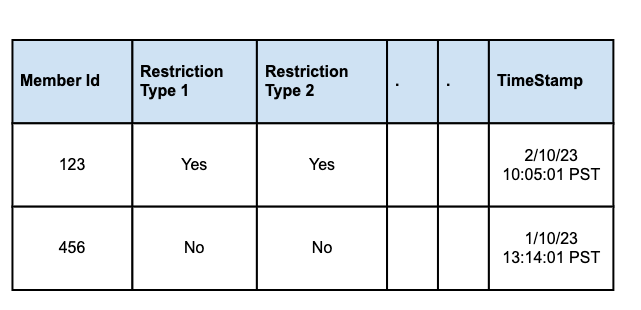
Source: LinkedIn Engineering Blog However, this approach posed a few challenges:
As LinkedIn grew and transitioned to a microservices architecture, the relational database approach couldn’t keep up with the increasing demand.
The architecture became cumbersome due to Oracle’s limitations in handling high query volumes and maintaining low latency.
Server-Side Cache Implementation
To address the scaling challenges, the team introduced server-side caching. This significantly reduced latency by minimizing the need for frequent database queries.
A cache-aside strategy was employed that worked as follows:
When restriction data was requested, the system first checked the in-memory cache.
If the data was present in the cache (cache hit), it was served immediately.
If the data was not found (cache miss), it was fetched from the database and asynchronously updated in the cache for future requests.
See the diagram below that shows the server-side cache approach:
Restrictions were assigned predefined TTL (Time-to-Live) values, ensuring the cached data was refreshed periodically.
There were also shortcomings with this approach:
The server-side cache wasn’t distributed, meaning individual hosts had to manage their caches.
The approach worked well for low-traffic scenarios, but struggled under high cache-hit demands, necessitating further improvements.
Client-Side Cache Addition
Building on the server-side cache, LinkedIn introduced client-side caching to enhance performance further. This approach enabled upstream applications (like LinkedIn Feed and Talent Solutions) to maintain their local caches.
See the diagram below:
To facilitate this, a client-side library was developed to cache the restriction data directly on application hosts, reducing the dependency on server-side caches.
Even this approach had some challenges as follows:
Client-side caching increased operational complexity as engineers had to maintain consistency between client and server caches.
Refresh operations strained the database, especially during updates or restarts when caches had to be reloaded.
Full Refresh-Ahead Cache
To overcome some of the challenges with client-side caching, the team adopted a full refresh-ahead cache model for the system.
In this approach, each client stored all restriction data in its local memory, eliminating the need for frequent database queries. A polling mechanism regularly checked for updates to maintain cache freshness.
This led to a remarkable improvement in latencies, primarily because all member data was readily available on the client side. There was no need for network calls.
However, the approach also had some limitations and trade-offs:
The memory footprint was significant, as each client needed enough memory to store the entire dataset.
During application restarts or deployments, the system experienced high resource consumption to reload all data, resulting in performance bottlenecks.
The increased database load during refresh operations led to latency spikes and stressed the Oracle database infrastructure.
Bloom Filters
To address scalability and efficiency challenges, LinkedIn implemented Bloom Filters.
Bloom Filter is a probabilistic data structure designed to handle large datasets efficiently. Instead of storing the full dataset, it used a compact, memory-efficient encoding to determine whether a restriction record existed in the system. If a query matched a record in the Bloom Filter, the system would proceed to apply the restriction.
The main advantage of using Bloom Filter was to conserve valuable resources. It reduced the memory footprint compared to traditional caching mechanisms. Also, queries were processed rapidly, improving system responsiveness.
However, Bloom Filters also had some trade-offs:
Bloom Filters are probabilistic, meaning there is a small chance of false positives where the filter incorrectly indicates a restriction exists.
Despite this, the trade-off was deemed acceptable for LinkedIn’s use case, as it ensured high performance and scalability.
Second Generation
As LinkedIn grew and its platform became more complex, the engineering team recognized the limitations of its first-generation system, which relied heavily on relational databases and caching strategies.
To keep up with the demands of a billion-member platform, the second generation of LinkedIn’s restriction enforcement system was designed.
The second-generation system had several important goals such as:
High QPS (4-5 million): The system had to handle restriction enforcement for every request across LinkedIn’s extensive product offerings.
Ultra-Low Latency (<5 ms): The new system relied on in-memory lookups for fetching restriction data, eliminating the need for repeated database queries. This approach drastically reduced response times, ensuring a seamless experience for LinkedIn members and applications.
High Availability (Five 9’s): The system was designed to achieve 99.999% availability, a level of reliability critical for enforcing restrictions without interruptions. By distributing data across multiple nodes and data centers, the system minimized the risk of downtime.
Horizontal Scaling: To support the growing volume of restrictions and requests, the system could scale horizontally by adding more nodes or servers.
Data Freshness and Synchronization: Real-time updates through Kafka ensured that all restriction data remained synchronized across the platform, avoiding inconsistencies.
Adoption of NoSQL Distributed Systems
One of the key innovations in this generation was the migration of restriction data management to LinkedIn’s Espresso, a custom-built distributed NoSQL document store.
This is because relational databases like Oracle struggled with the high query throughput and latency requirements of LinkedIn’s growing platform. Espresso, being a distributed NoSQL system, provided better scalability and performance while maintaining data consistency.
Espresso was tightly integrated with Kafka, LinkedIn’s real-time data streaming platform. Every time a new restriction record was created, Espresso would emit Kafka messages containing the data and metadata of the record. These Kafka messages enabled real-time synchronization of restriction data across multiple servers and data centers, ensuring that the system always had the latest information.
See the diagram below to understand the architecture of the 2nd generation restriction enforcement system.
Despite its many advancements, the second-generation system faced some operational challenges, particularly during specific scenarios:
Bootstrapping Data During Restarts:
When a server or application restarted, it needed to reload all restriction records from the database into its memory.
This process, known as bootstrapping, was resource-intensive and time-consuming, often taking over 30 minutes for large datasets.
The high load during bootstrapping could strain the Espresso database and impact system performance.
Handling Large-Scale Growth: While the system scaled well horizontally, the sheer volume of restriction records and requests during periods of high adversarial activity tested the limits of infrastructure.
CAP Theorem
LinkedIn had to make critical architectural choices concerning CAP Theorem trade-offs while designing the second-generation system.
The CAP Theorem states that a system can only achieve two out of the following three guarantees at any given time:
Consistency (C): Every read receives the most recent write or an error.
Availability (A): Every request receives a non-error response, regardless of the state of any individual node.
Partition Tolerance (P): The system continues to operate even when there is a network partition.
LinkedIn prioritized consistency (C) and availability (A) over partition tolerance (P). The decision was driven by their latency and reliability goals.
The restriction enforcement system needed to provide accurate and up-to-date data across the platform. Incorrect or outdated restriction records could lead to security lapses or poor user experiences. Also, high availability was essential for ensuring that restrictions could be enforced seamlessly, even during peak activity periods.
LinkedIn's previous experiences with partitioned databases revealed that partitions could introduce latencies that conflicted with their stringent performance requirements (for example, ultra-low latency of <5 ms).
The use of Espresso allowed LinkedIn to handle consistency and availability more effectively within their system design. Integration with Kafka ensured that restriction records were synchronized across servers in real-time, maintaining consistency without significant delays.
Third Generation
As LinkedIn grew even further, the second-generation restriction enforcement system, though robust, began to show strain under the increasing volume of data and adversarial attacks.
Therefore, the LinkedIn engineering team implemented a new generation of its restriction enforcement system. See the diagram below:
The third generation introduced innovations focused on optimizing memory usage, improving resilience, and accelerating the bootstrap process.
1 - Off-Heap Memory Utilization
One of the major bottlenecks in the second-generation system was the reliance on in-heap memory for data storage. This approach led to challenges with Garbage Collection (GC) cycles, which caused latency spikes and degraded system performance.
To address these issues, the third-generation system moved data storage to off-heap memory.
Unlike in-heap memory (managed by the Java Virtual Machine), off-heap memory exists outside the JVM’s control. By shifting data storage to off-heap memory, the system reduced the frequency and intensity of GC events.
Some benefits of this approach were as follows:
Off-heap memory provided more space for storing restriction data without overloading the JVM heap.
This change reduced GC interruptions, resulting in smoother and more consistent system performance.
Hosts could handle larger datasets without increasing the risk of hitting memory limits.
2 - Venice and DaVinci Framework
To further optimize the system, the LinkedIn engineering team introduced DaVinci, an advanced client library, and integrated it with Venice, a scalable derived data platform.
Here’s how these tools work together:
DaVinci operates as an eager cache, meaning it proactively loads all restriction data into memory at the start. This eliminated the need for frequent on-demand lookups.
The restriction data was stored in bitset-like data structures, which are highly memory-efficient. These structures allowed the system to manage large datasets while minimizing memory footprint.
Venice, a distributed platform designed for derived data, enabled seamless integration and synchronization of restriction data. It allowed DaVinci to fetch and store data efficiently, ensuring high-speed performance even during periods of intense activity.
The innovations in the third-generation system addressed many of the limitations of its predecessors. A couple of benefits were as follows:
Faster Bootstrapping Processes: With DaVinci’s eager caching, restriction data was loaded into memory more quickly during server restarts or deployments. This reduced downtime and ensured the system could respond to restrictions almost immediately after initialization.
Greater Resilience: The system was better equipped to handle organic growth (more users and data) and adversarial data growth (spikes in restrictions due to malicious activity). By leveraging memory-efficient data structures and off-heap storage, the system could scale without running into performance bottlenecks.
Conclusion
From the early reliance on relational databases to the adoption of advanced NoSQL systems like Espresso, and the integration of cutting-edge frameworks like DaVinci and Venice, every stage of development of the restriction enforcement system showcased LinkedIn's focus on innovation.
However, this journey was not just about innovation. It was also guided by a clear set of principles such as:
Start Simple, Scale Thoughtfully: Early designs avoided unnecessary complexity, focusing on solving immediate problems in a straightforward manner.
Proactive Problem Identification: This approach allowed the engineering team to anticipate challenges, such as memory pressure or latency spikes, and address them with strategic solutions.
Collaboration Across Teams: Cross-team collaboration enhanced efficiency by promoting knowledge sharing and reducing redundant efforts.
Benchmarking and Testing: Time-bound experiments and performance benchmarks allowed the team to evaluate approaches quickly.
Continuous Improvement: Each generation of the restriction enforcement system is built upon the successes and shortcomings of the previous one.
References:
SPONSOR US
Get your product in front of more than 1,000,000 tech professionals.
Our newsletter puts your products and services directly in front of an audience that matters - hundreds of thousands of engineering leaders and senior engineers - who have influence over significant tech decisions and big purchases.
Space Fills Up Fast - Reserve Today
Ad spots typically sell out about 4 weeks in advance. To ensure your ad reaches this influential audience, reserve your space now by emailing sponsorship@bytebytego.com.
Like
Comment
Restack
© 2025 ByteByteGo
548 Market Street PMB 72296, San Francisco, CA 94104
Unsubscribe
by "ByteByteGo" <bytebytego@substack.com> - 11:34 - 21 Jan 2025 -
GEOMETRIC DIMENSIONING AND TOLERANCING (GD&T) 17 & 18 Feb 2025
Please call 012-588 2728
email to pearl-otc@outlook.com
HYBRID PUBLIC PROGRAM
GEOMETRIC DIMENSIONING
AND TOLERANCING (GD&T)
10 CPD Points Awarded by MBOT.
(** Choose either Zoom OR Physical Session)
Remote Online Training (Via Zoom) &
Wyndham Grand Bangsar Kuala Lumpur Hotel (Physical)
(SBL Khas / HRD Corp Claimable Course)
Date : 17 Feb 2025 (Mon) | 9am – 5pm By Selvaraj
18 Feb 2025 (Tue) | 9am – 5pm .
.
INTRODUCTION
Geometric dimensioning and tolerancing (GD&T) is a language used on mechanical engineering drawings composed of symbols that are used to efficiently and accurately communicate geometry requirements for associated features on components and assemblies. GD&T is, and has been, successfully used for many years in the automotive, aerospace, electronic and the commercial design and manufacturing industries.
Success oriented industries and organizations which, require accurate and common lines of communications between engineering, design, manufacturing and quality should consider geometric dimensioning and tolerancing (GD&T) as their mechanical drawing standard.
LEARNING OBJECTIVE
At the conclusion of this 2 days program, participants will be able to:
- Gain knowledge on what GD&T is all about
- Explain the benefits of geometric tolerancing
- Learn how to apply GD&T in their job
- Able to interpret customers requirements from the design drawing
- Understand the problems in manufacturability
- Be reminded of the Do’s & Don’t’s of proper tolerancing
- Able to set quality control criteria from design drawing
- Identify datum features and determine their order of precedence
- Identify and interpret each of the characteristic symbols
- Describe the material condition modifiers and how "bonus" tolerance occurs
- Correctly interpret GD&T feature control frames, and explain the impact on manufacturing and inspection
METHODOLOGY
- The workshop is a mixture of presentation with personal examples, videos, assessment, discussions and group activities.
- Practical activity on drawing interpretation and measurement methods will be given throughout the training for better understanding.
INTENDED AUDIENCE
- This 2 days workshop has been designed for Engineers, Supervisors, Technicians, Inspection & Measurement Technicians and Production staff who are involved in design, measurement and production of mechanical parts.
- This course is designed for personnel whose work requires them to communicate, interpret or manufacture products through the use of engineering drawings and/or CAD models.
- Also those communicating constantly with customers for new parts/molds manufacturing.
- Participants should have an understanding of basic blueprint reading.
OUTLINE OF WORKSHOP
Session 1: 9am - 5pm
1. Introduction to GD&T
i. Limitations of coordinate tolerancing
ii. Advantages of GD&T
iii. Exercise 1
2. Standards
i. Latest GD&T revision & governing body
ii. Exercise 2
3. Dimensioning & tolerancing fundamentals
i. Basic dimension
ii. Critical dimension
iii. Reference dimension
iv. Feature control frame
v. Exercise 3
4. Common symbols used in GD&T
i. New symbols from rev 2009 Y14.5
ii. Exercise 4
5. Rules for drawing & design
i. Rule #1
ii. Rule #2
iii. Bonus Tolerance
iv. GD&T applied to a feature of size
v. Bonus and the MMC modifier
vi. Virtual condition
vii. Gauging and inspection using GD&T
viii. Exercise 5
6. Datums
i. Datum vs. datum feature
ii. The datum reference frame
iii. Primary, secondary, and tertiary datums
iv. Exercise 6
Session 2: 9am - 5pm
7. Forms
i. Straightness
a. Straightness Brief
b. Line Element Straightness
c. Design
d. Tooling / production
e. Inspection
ii Flatness
a. Flatness Brief
b. Surface Flatness
c. Design
d. Tooling / production
e. Inspection
iii Roundness
iv Cylindricity
v Exercise 7
8.Profiles
i. Line profile
ii. Surface profile
iii. Exercise 8
9. Orientation
i. Angularity
ii. Perpendicularity
iii. Parellelism
iv. Exercise 9
10. Location
i. Position
a. True position
b. Position tolerance RFS
c. Using MMC or LMC
d. The "boundary" concept
e. The pitch diameter rule
ii Symmetry
iii Concentricity
iv Exercise 10
11. Runout
i. Circular runout
ii. Total runout
iii. Exercise 11
12. Common issues/errors faced
i. Exercise 12
** Certificate of attendance will be awarded for those who completed the course
ABOUT THE FACILITATOR
Selvaraj is a highly qualified technical trainer in the areas of Continuous Improvement and Quality Excellence. He believes in interactive and fun filled training. His method of training is sharing rather than lecturing. With 23 years of experience in the field of Manufacturing Improvement & Quality Excellence covering areas of Design, Material Selection, Tooling, Machine & Process Engineering, Production and Supply Chain Management, Selvaraj uses lots of real life examples. Selvaraj B started his career in 1989 as a Mechanical Engineer and in 23 years, has worked in 3 MNC companies that are World Class, i.e. Matsushita (Japanese), Robert Bosch (German) and Entegris (American) up to the level of an Operations Manager. Selvaraj is a certified HRDF trainer. His strength is combining the intricacies and details of technical training with highly humorous anecdotes for maximum training effectiveness.
AMONG HIS NOTABLE ACHIEVEMENTS ARE:
1. Leading Gold Medal winning teams to NPC conventions – 1995 - 2002
2. Certified MTM and Ergonomics practitioner - 1997
3. Tooling & plastic parts design standardization - 2000
4. Awarded best Six Sigma Champion award in 2006 for promoting successful Sigma projects – 2006
5. Certified Trainer with Napoleon Hill International - 2007
6. Certified Lean Sigma Champion - 2010
7. Competent Communicator & Humorous Speech Division N Champion in Toastmasters International – 2012
8. Certified Six Sigma Master Black Belt - 2016
9. Member of the Society of Plastics Engineers
10. Member of the Institute of Engineers Malaysia
11. Certified NLP Practitioner - 2016
12. Certified VDI Quality Systems auditor - 1997
13.Certified Industry 4.0 Professional accredited by the US-based
International Institute of Executive Careers™ (IIEC)
AMONG HIS NOTABLE IMPROVEMENTS PROJECTS ARE:
1. Consolidating the Plastic Injection Moulding sections into 1 department & leading it – Bosch Bayan Lepas
2. Motivating and guiding numerous scrap reduction & quality improvement teams – Bosch Bayan Lepas, Automotive Lighting Bayan Lepas
3. Reduction of manufacturing lead time from 28 days to 3 days – Entegris
4. Cycle time reduction projects – Bosch, Entegris
5. Lean improvement projects – Signature Kitchen Sdn. Bhd. KL, Anshin Precision Sdn. Bhd. Shah Alam, Silverstone Berhad Taiping.
6. Starting a new factory of 200 headcount for Silicone Wafer Process Carrier comprising of Manufacturing, Maintenance, Engineering, Tooling, Production Planning & Continuous Improvement Department – Entegris Kulim Hi-Tech.
7. Guiding and inspiring numerous quality improvement and cost reduction teams to State level and National level competition and recognition.
8. Setting up & developing a World Class Manufacturing team for clean room fittings manufacturing – Entegris Kulim Hi-Tech
(SBL Khas / HRD Corp Claimable Course)
training Fee
14 hours Remote Online Training (Via Zoom)
RM 1,296.00/pax (excluded 8% SST)
2 days Face-to-Face Training (Physical Training at Hotel)
RM 2,407.00/pax (excluded 8% SST)
Group Registration: Register 3 participants from the same organization, the 4th participant is FREE.
(Buy 3 Get 1 Free) if Register before 6 Feb 2025. Please act fast to grab your favorite training program!We hope you find it informative and interesting and we look forward to seeing you soon.
Please act fast to grab your favorite training program! Please call 012-588 2728
or email to pearl-otc@outlook.com
Do forward this email to all your friends and colleagues who might be interested to attend these programs
If you would like to unsubscribe from our email list at any time, please simply reply to the e-mail and type Unsubscribe in the subject area.
We will remove your name from the list and you will not receive any additional e-mail
Thanks
Regards
Pearl
by "allp@otcmsdnbhd.com.my" <allp@otcmsdnbhd.com.my> - 07:16 - 21 Jan 2025 -
ATTENTION !!! DESIGN OF EXPERIMENT (DOE) (12 & 13 March 2025)
GRAB 3 FREE 1 !!!
Please call 012-588 2728
email to pearl-otc@outlook.com
FACE-TO-FACE PUBLIC PROGRAM
DESIGN OF EXPERIMENT (DOE)
Venue : Dorsett Grand Subang Hotel, Selangor (SBL Khas / HRD Corp Claimable Course)
Date : 12 March 2025 (Wed) | 9am – 5pm By Venu
13 March 2025 (Thu) | 9am – 5pm . .
INTRODUCTION
Design of experiments, also called experimental design, is a structured and organized way of conducting and analyzing controlled tests to evaluate the factors that are affecting a response variable. Experimental design and optimization are tools that are used to systematically examine different types of problems that arise within, e.g., research, development and production. It is obvious that if experiments are performed randomly the result obtained will also be random. Therefore, it is a necessity to plan the experiments in such a way that the interesting information will be obtained.
In an experiment, we deliberately change one or more process variables (or factors) in order to observe the effect the changes have on one or more response variables. The (statistical) design of experiments (DOE) is an efficient procedure for planning experiments so that the data obtained can be analyzed to yield valid and objective conclusions.
LEARNING OBJECTIVES
This program is designed to enable participants to learn the fundamental theory about Design of Experiment, and to use it in a practical situation such as Research and Development, Process Optimization and other possible applications.
Here are the learning objectives for the two days training program; after completing this program, participants will be able to:
- Understand the methodology of design of experiments
- Plan a design of experiment
- Explain the importance of each concept used in design of experiments
- Recognize variables in an experiment and how they interact
- Understand how to create and use an analysis of variance (ANOVA) table
- Understand how to conduct and analyze the results of a contrast test
- Identify the advantages, disadvantages, assumptions and hypotheses related to various types of designs, including completely randomized design, completely randomized block design, Latin Square design, and factorial designs
- Analyze the results of designed experiments
TARGET GROUP
Process Engineers, R & D Engineers/Scientist, and other technical based individual, working with process Improvement.
LANGUAGE
- English
- Bahasa Malaysia
DURATION
Time: 9.00 a.m. - 5.00 a.m.
Days: 2 days
OUTLINE OF WORKSHOP
DAY 1
1. Introduction
- Introduction to DOE
2. Full Factorial Design
- One Factor at A Time
- Coding Factors
- Factorial Design
- Calculating Main and Interaction Effects
- Creating Full Factorial Design
- Analyzing DOE results
- Plotting Main and Interaction Effects Plot
- Replication, Centre Point and Blocking
- Model Reduction.
- Limitation of Full Factorial Design
Activity
- DOE catapult/Helicopter simulation Workshop
DAY 2
1. Introduction
- Why Fractional Factorial Design?
2. Fractional Factorial Design
- Screening Design
- Fractional Factorial Design
- Alias Relationship and Confounding Factors
- Design Resolution
- Fold Over Design
- Sample size determination for 2 level factorial Design
3. DOE for Variance Reduction and Response Optimizer
- DOE for variance reduction
- Creating and Analyzing DOE for Variance Reduction.
- Response Optimizer Introduction
- Response Optimizer Strategy
- Multiple Response Optimizer
Activity
- DOE catapult/Helicopter simulation Workshop
** Certificate of attendance will be awarded for those who completed the course
ABOUT THE FACILITATOR
VENU
Mr Venu, been advocate and consultant in Quality and Analytics subjects for about 12 years . Started is career after completed his higher education in University Malaya majoring in Material Engineering in Motorola in 2006. Trained by Motorola Inc in Six Sigma methodology. He been well versed Quality methods and process Improvement methods. As a Motorola’s Six Sigma practicing engineer , he was not only well versed in the theoretical concept but hands on approach in solving complex problems, driving process improvement activities, and leading quality drives across organization.
In later part of is career he was involved in Big data Analytics, and spend considerable time, on implementing Analytics Concepts, such Artificial Intelligence on Manufacturing process, automated decision making and predictive concept manufacturing. He is one of the chosen team to drive Industry 4.0 in Western Digital when the concept was introduced in 2012.
His tenure in Western Digital marked the time where manufacturing process being automated by data driven decision making and relaying less on human dependent manual labor. His participation in Industrial 4.0 core team was instrumental to drive this change across organization. His team was actively involved creating and implementing artificial modeling to reduce effort spend to find root cause. This much relieved the engineers to focus more actual improvement and other task instead of fire fighting to find root causes.
In his 12 years in major MNC’s, where he is exposed to many real-life case studies in many engineering and high technology manufacturing. A part of his career, he have been involved actively in training organization in six sigma, process improvement, analytics and other related subject for the last 7 years.
His well versed in his subject matters and very passionate about sharing is knowledge with everyone. As a trainer he truly understand the need for knowledge of both quality and analytics and how to make both work supplementing each other in order to bring organization to the new industrial age.
1. Subject Matter Expertise
2. Career Experience
Process Improvement Consultant/Manager
Jcy International Bhd
(2015- 2016)
Function Includes
- Driving Continuous Improvement for overall organization, playing vital roles identifying possible improvement area. Drive beneficial projects with key stakeholders.
- Mentor and consult green/black belt project with focusing quality, delivery and Cost.
- Train organization on process improvement and analytical method to enhance data-based decision skills.
- Consult and advice overall quality improvement to drive excellent manufacturing culture.
Senior Staff Engineer
Western Digital Corp
HDD Analytics
(2012 -2015)
Dual function role with HDD Analytics group as Operational Analytics Expert and Master Black Belt Consultant.
________________________________________________________________________________________________________________________________________________________
Senior Process Development Engineer
Infineon Technologies
Power Product Division
(2011- 2012)
Process development Engineer for Infineon Power Package Division. Focusing Process and product Development for front end process. Lead package Development for PO programs form R & D stage to HVM (High Volume Manufacturing).
_______________________________________________________________________________________________________________________________________________________
Process and Equipment Engineer
Freescale Semiconductor (formerly Motorola Inc.)
Flip Chip Process and Product Engineering
(2006 – 2011)
Responsible for Motorola’s Flip Chip front end assembly process. Function include continuous process improvement using six sigma methodology, handling customer concern regarding Flip Chip assembly process, ensure material/process/equipment as per accordance to ensure flawless manufacturing process.
(SBL Khas / HRD Corp Claimable Course)
TRAINING FEE
2 days Face-to-Face Public Program
RM 2,250.00/pax
(excluded 8% SST)
Group Registration: Register 3 participants from the same organization, the 4th participant is FREE.
(Buy 3 Get 1 Free) if Register before 3 March 2025. Please act fast to grab your favourite training program!We hope you find it informative and interesting and we look forward to seeing you soon.
Please act fast to grab your favorite training program! Please call 012-588 2728
or email to pearl-otc@outlook.com
Do forward this email to all your friends and colleagues who might be interested to attend these programs
If you would like to unsubscribe from our email list at any time, please simply reply to the e-mail and type Unsubscribe in the subject area.
We will remove your name from the list and you will not receive any additional e-mail
Thanks
Regards
Pearl
by "sump@otcmarketing.com.my" <sump@otcmarketing.com.my> - 04:51 - 21 Jan 2025 -
HYBRID TRAINING !!! FINANCE FOR NON FINANCE PROFESSIONALS (18 & 19 FEB 2025)
Please call 012-588 2728
email to pearl-otc@outlook.com
HYBRID PUBLIC PROGRAM
FINANCE FOR NON FINANCE PROFESSIONALS
(** Choose either Zoom OR Physical Session)
Remote Online Training (Via Zoom) &
Wyndham Grand Bangsar Kuala Lumpur Hotel (Physical)
(SBL Khas / HRD Corp Claimable Course)
Date : 18 Feb 2025 (Tue) | 9am – 5pm By Joyce
19 Feb 2025 (Wed) | 9am – 5pm . .
OVERVIEW
In today’s changing business conditions and intense competition, there is a need for all functional or business heads to grasp, understand and apply fundamentals of financial accounting knowledge in respective areas or business units to be all rounded professional managers. Moving forward, most functional and business managers are expected are deemed ‘owners’ of the profit & loss numbers!
By acquiring this skill, this will enable them to better understand and analyses financials statements, contribute effectively in the budgeting process and makes effective decision in investment and project selection. This programme will highlight methods used by finance function which are relevant today for management decision support.
Who should attend: Professionals, Senior Managers, Managers, Executives who had no formal training in accounting & finance but wish to understand and interpret financial statements and enhance financial management & budget setting process.
OBJECTIVES
On completion of the programme, participants will be able to:-
- Master the interpretation of financial statements
- Identify key financial concerns via variance analysis for financial sector products.
- Know how to analyse and evaluate key financial indicators in view to contribute towards improving organisation’s performance
- Understand the concepts, language and basic rules of accounting & finance.
- Equip oneself with knowledge in order to effectively manage a business organization.
TRAINING APPROACH
Where appropriate, activities will include the following:
· Lecture & Videos
· Faciliated Group Discussions & Quiz
· Practical exercises and case studies
DURATION
2 Days (9.00 am – 5.00 pm)
OUTLINE OF WORKSHOP
DAY 1
1. Introduction to Finance Accounting & Finance Analysis
2. Building Financial Knowledge:
- Financial Terminology
- Practical understanding of practical finance and accounting concepts
3. Understanding financial statements
- Types of financial statements: Profit & Loss, Cash Flow, Balance Sheet & its importance and usefulness
- Evaluation business performance and viability through:
· Margin analysis
· Return of Investment (ROI), Gearing (leverage) & liquidity ratios
- Learn the golden rule of financial management (personal & company finance)
· Working capital management
· Why rich companies get richer?
· Cash versus profit measures
4. Management reporting: Variance Analysis
- Understanding essentials of variance analysis & how variances are calculated.
- What causes budget variances?
DAY 2
5. Budget process
- Overview of Top Down and Bottoms Up budgeting and forecasting process & methodologies with simple practical exercises.
- Importance of assumptions and SWOT analysis for budget setting exercise.
- Identify which cost element which are difficult to forecast
- Capital Expenditure and Revenue Expenditure Concepts.
6. Understanding budget via understanding of cost
- Cost element classification
- Value Costing
- Costing methods and structure
- Identify firm’s Cost drivers
- Different types of cost – fixed, variable
- Breakeven and contribution analysis
7. Cash Flow Statement & Management
- Ten Tips for Managing Cash Flow for Companies
- Understanding operating cash flow by work capital management
- Working Capital Management definition and its importance in cash flow management
- Managing company inventories for enhancing cash liquidity
- Understanding Cash Flow Statement Components for forecasting
- Sample CF format case study interpretation.
** Certificate of attendance will be awarded for those who completed the course
ABOUT THE FACILITATOR
JOYCE
- Chartered Accountant, Fellow ACCA UK (Year 2008) and MIA (Year 2003)
- Certified Train the Trainer (TTT), PSMB, 2015 No: 13320
- Certified Neuro Linguistic Programme (NLP) Practitioner & Certified TimeLine Therapy NLP Coach, 2017 (ABNLP) & Licensed Hypnotherapist (Association of Hypnotherapy Practitioners Malaysia AHPM 2017)
- Certified Change Management Practitioner (PROSCI USA – 2017)
Joyce is a Fellow Member of Chartered Association of Certified Accountants (ACCA), United Kingdom (UK) and a Chartered Accountant member of Malaysia Institute of Accountants (MIA). Her career began in one of the largest Malaysia conglomerate, Berjaya Group of Companies in role of a group financial accountant. She then moved into telecommunications (Maxis Communications, Nokia Networks) and ICT industry (IBM Malaysia) in various roles in management, business & operational finance, finance analysis, planning & budgeting. Since year 2012 & beyond, she was headhunted to join one of the established regional and global FMCG food/beverage, finance tech and recently, Avon, a global cosmetics single and multi -level marketing industry in a senior commercial finance leadership role.
Her interest in training and facilitation began in Nokia Networks Malaysia when she was requested to train business managers the essentials of finance analysis, Sarbannes Oxley (SOX) compliance requirements and interpretation of financials.
Due to passion and interest in public speaking, training and development she was the Past President of Malaysian Insititute of Human Resource Management (MIHRM) Toastmasters Club in year 2007-2008. She successfully obtained Advance Communication Bronze, Advanced Communication Silver (ACB, ACS) and Competent Leader (CL) communication awards from Toastmasters International, USA. In addition, she was Past President of Rotaract Club of Port Klang Centennial, part of Rotary International Organisation.
What you can expect from Joyce is the ability to explain some how complex financial concepts in layman’s terms. Plus point is her vast experience in business, finance, accounting & people management gained in Malaysia PLCs and global multi-national companies will enriches participants’ knowledge and increases their aptitude for appreciating the intricate subject of Finance and Management. She also familiar with training of junior accountants in shared services accounting function environment due to exposure in IBM Malaysia in shared services regional accounting & finance center.
She has conducted various programs such as:
- Finance for Non Finance Personnel & Managers
- Use of Financial Information for Strategic Cost Management
- Effective Financial Management.
- Effective Credit Control Management and Processes
- Business Accounting & Accounting Functions
- Budgeting & Strategic Planning
- Financial Wellness & Literacy Workshop: Money and Me programmes.
- Accounting standards workshop and training
The list of clients who had benefitted from her expertise were:
- PMI Industries Sdn Bhd, & Mackenzie Industries (subsidiaries of Wah Seong Group)
- Star Media Radio Group of Companies
- MyWIN Academy Berhad (Prime Minister’s Department)
- Wah Seong Group Corporation Berhad
- Clipsal Manufacturing (Schneider Electric)
- Bintulu Development Authority (BDA)
- Sudong (subsidiary company of Singtel Telecommunications Inc) Malacca & Klang
- UMW Corporation Berhad SL1M programmes
- Gentpac Malaysia (Shared Services Accounting and Finance Center)
- UEM Edgenta Malaysia Berhad
- Construction Industrial Development Berhad (CIDB)
- Malaysian Communications and Multimedia Commission (MCMC)
- Amway Malaysia Holdings Berhad
- Salcon Engineering Berhad
- Malakoff Corporation Berhad (MCB) and subsidiaries.
- Human Resource Development Fund (HRDF) Finance Public Programmes: PENJANA for Small & Medium Size (SME)
(SBL Khas / HRD Corp Claimable Course)
training Fee
14 hours Remote Online Training (Via Zoom)
RM 1,296.00/pax (excluded 8% SST)
2 days Face-to-Face Training (Physical Training at Hotel)
RM 1,900.00/pax (excluded 8% SST)
Group Registration: Register 3 participants from the same organization, the 4th participant is FREE.
(Buy 3 Get 1 Free) if Register before 10 Feb 2025. Please act fast to grab your favorite training program!We hope you find it informative and interesting and we look forward to seeing you soon.
Please act fast to grab your favorite training program! Please call 012-588 2728
or email to pearl-otc@outlook.com
Do forward this email to all your friends and colleagues who might be interested to attend these programs
If you would like to unsubscribe from our email list at any time, please simply reply to the e-mail and type Unsubscribe in the subject area.
We will remove your name from the list and you will not receive any additional e-mail
Thanks
Regards
Pearl
by "sump@otcsb.com.my" <sump@otcsb.com.my> - 04:16 - 21 Jan 2025 -
ENDS in 4 hours… (plus replay inside)
Your FREE VIP experience is disappearing…This is it – your LAST CHANCE to secure your FHL ticket and be entered into a drawing for your chance to win VIP Experience and hang w/ me at FHL
Step 1 - If you haven’t yet, watch the newest FHL 10 speaker reveal featuring none other than…
ANDY ELLIOTT!!
Watch today’s interview w/ Andy Elliott HERE →
Lost people don’t know they’re lost…
That’s where Andy was…
Until his wife sat him down one day for a hard conversation… And he realized he wasn’t the big shot he thought he was.
At age 39 he turned his life around, took a chance on an offer from Tony Robbins, Dean Graziosi and myself, and his success has only skyrocketed since.
From W-2 employee to building a NINE-FIGURE business in just a few short years.
As the second speaker at Funnel Hacking Live 10, Andy is going to reveal exactly how he did it… and how you can do it too.
Just like he does in his business, Andy is going to absolutely overdeliver at FHL, teaching you how to become a master communicator in sales, how to scale super quickly on social media like he did AND how he was able to reinvent himself from lost and ignorant to purposeful and driven in a very short amount of time.
Watch the interview replay w/ Andy Elliott HERE →
Step 2 - Get your tickets for Funnel Hacking Live 10 reserved by MIDNIGHT TONIGHT in order to receive all the incredible FREE bonuses before they’re gone for good!!
[ENDS IN 4 HRS] GRAB YOUR TICKET FOR THE CHANCE TO HANG W/ ME (RUSSELL) AT FHL FOR FREE HERE →
And just in case, here’s a re-cap of what you get when you secure your FHL ticket BEFORE MIDNIGHT TONIGHT!!!Awesome VIP Bonus #1
Hang-out with ME (Russell Brunson!!) backstage at FHL!! Join me backstage where we can chat, take pictures and get some autographs!Awesome VIP Bonus #2
Get an exclusive behind-the-scenes look of the event!! Get the rare chance to see how the sausage is made – what it REALLY takes to put on a marketing event of this magnitude…
And keep in mind… with this being the last FHL… YOU WILL NOT get a chance like this ever again!!
Awesome VIP Bonus #3
Access to the VIP lounge!! Join the other VIP members in a more comfortable, less crowded setting where you can relax AND possibly discover some game-changing networking opportunities!
Awesome VIP Bonus #4
Reserved FRONT ROW seat for every single speaker!! Sit up close with TONY ROBBINS, Prince EA, Eileen Wilder, Dan Kennedy and literally every other FHL speaker as they deliver their life-changing presentations!!
Awesome VIP Bonus #5
Room UPGRADE to a SUITE* Spend the last ever Funnel Hacking Live in luxury and style in your very own hotel suite!! (*must have previously booked your standard room at Harrahs or the Linq)
And last but certainly not least…
Complimentary access to the ‘Day With Dan’ event!!February 11th, the master of direct response marketing himself will be presenting LIVE three ‘mini events’ the day before FHL officially kicks off, and YOU will gain access to the ENTIRE DAY of unimaginably valuable information –
Mini event #1 – “My Adventures In 40 Years In Direct Marketing And Their Eternal Lessons”
Mini event #2 – “Methodology That I Took From Varied Sources For MY ‘Success System’ That Never Fails”
Mini event #3 – “How To Develop Into ‘The Radical’ Who Attracts Exceptionally HIGH-VALUE Lifetime Customers”Before retiring, Dan typically charged upwards of $20k for a full day of consulting/mentoring…
[ENDS IN 4 HRS] GRAB YOUR TICKET FOR THE CHANCE TO HANG W/ ME (RUSSELL) AT FHL FOR FREE HERE →
This is it.
I’m not emailing about this next week.
I’m not extending this offer another day…
THIS is your ONLY chance to potentially win a full VIP experience absolutely FREE right now.
All you have to do is secure your FHL ticket before midnight tonight and you’ll automatically be entered into the drawing.
We pick the lucky winner on January 27th!!!
[ENDS IN 4 HRS] GRAB YOUR TICKET FOR THE CHANCE TO HANG W/ ME (RUSSELL) AT FHL FOR FREE HERE →
Your chance to hang with me back-stage ENDS IN 4 HOURS…
Don’t wait.
Act now.
It’ll be something you’ll never forget (and quite possibly could change the trajectory of your life and business… just sayin’ ;)
Grab your FHL ticket here now before this chance ends in 4 hours →
See you back-stage in Vegas!
Russell Brunson
P.S. Don’t forget, you’re just one funnel away…
© Etison LLC
By reading this, you agree to all of the following: You understand this to be an expression of opinions and not professional advice. You are solely responsible for the use of any content and hold Etison LLC and all members and affiliates harmless in any event or claim.
If you purchase anything through a link in this email, you should assume that we have an affiliate relationship with the company providing the product or service that you purchase, and that we will be paid in some way. We recommend that you do your own independent research before purchasing anything.
Copyright © 2018+ Etison LLC. All Rights Reserved.
To make sure you keep getting these emails, please add us to your address book or whitelist us. If you don't want to receive any other emails, click on the unsubscribe link below.
Etison LLC
3443 W Bavaria St
Eagle, ID 83616
United States
by "Russell Brunson" <noreply@clickfunnelsnotifications.com> - 03:25 - 21 Jan 2025 -
How leaders can start to strengthen global cooperation
On McKinsey Perspectives
The Global Cooperation Barometer Brought to you by Alex Panas, global leader of industries, & Axel Karlsson, global leader of functional practices and growth platforms
Welcome to the latest edition of Only McKinsey Perspectives. We hope you find our insights useful. Let us know what you think at Alex_Panas@McKinsey.com and Axel_Karlsson@McKinsey.com.
—Alex and Axel
•
Stagnant cooperation. The world order seems to be fragmenting at a time when cooperation is needed most, McKinsey global managing partner Bob Sternfels, McKinsey Global Institute director Olivia White, and their coauthors share. The Global Cooperation Barometer—which was developed by McKinsey and WEF and measures the extent to which global stakeholders are working together on critical trends—aims to help leaders understand the broad issues that affect billions of people’s lives and livelihoods. The barometer indicates that after trending positively for most of the past decade, global cooperation has reversed course since 2020.
•
Pillars of partnership. The barometer assesses five pillars of global cooperation; some areas have seen increased cooperation, while others exhibit declines. For instance, cooperation in flows of trade, capital, and people grew during the COVID-19 pandemic but decelerated in 2023. Meanwhile, in peace and security, cohesiveness has declined sharply since 2020. Explore the strategies that can enhance global cooperation, and as Day 3 of Davos is underway, discover related insights on geopolitics and resilience, one of McKinsey’s priority themes at this year’s meeting.
—Edited by Belinda Yu, editor, Atlanta
This email contains information about McKinsey's research, insights, services, or events. By opening our emails or clicking on links, you agree to our use of cookies and web tracking technology. For more information on how we use and protect your information, please review our privacy policy.
You received this email because you subscribed to the Only McKinsey Perspectives newsletter, formerly known as Only McKinsey.
Copyright © 2025 | McKinsey & Company, 3 World Trade Center, 175 Greenwich Street, New York, NY 10007
by "Only McKinsey Perspectives" <publishing@email.mckinsey.com> - 01:27 - 21 Jan 2025 -
Register Today for SAP Business Unleashed
Get ready for a new era of enterprise management.

When you connect everything,
you can achieve anything.Join CEO Christian Klein and CPO Muhammad Alam at our free 60‑minute virtual event, SAP Business Unleashed.
You’ll be the first to hear SAP’s bold new vision for enterprise management that combines AI, data, and applications like never before to unleash the full potential of your business.

Learn how to integrate and optimize every part of your business seamlessly — unlocking end‑to‑end visibility so you can achieve goals faster.

Dive into groundbreaking strategies that harmonize both your own and third-party data to power deeper insights, smarter decisions, and highly contextual AI.

Explore how Joule, our AI copilot, deploys agents across your company to transform the way you work: enhancing productivity, increasing value, and building resilience.
Get ready to bring out your best and unleash the full potential of your business.

Pro Tip: Can’t attend live? You can still register to receive the replay link.
SAP (Legal Disclosure | SAP)
This e-mail may contain trade secrets or privileged, undisclosed, or otherwise confidential information. If you have received this e-mail in error, you are hereby notified that any review, copying, or distribution of it is strictly prohibited. Please inform us immediately and destroy the original transmittal. Thank you for your cooperation.You are receiving this e-mail for one or more of the following reasons: you are an SAP customer, you were an SAP customer, SAP was asked to contact you by one of your colleagues, you expressed interest in one or more of our products or services, or you participated in or expressed interest to participate in a webinar, seminar, or event. SAP Privacy Statement
This e-mail was sent to you on behalf of the SAP Group with which you have a business relationship. If you would like to have more information about your Data Controller(s) please click here to contact webmaster@sap.com.
This promotional e-mail was sent to you by SAP Global Marketing and provides information on SAP's products and services that may be of interest to you. If you would prefer not to receive such e-mails from SAP in the future, please click on the Unsubscribe link.
To ensure you continue to receive SAP related information properly please add sap@mailsap.com to your address book or safe senders list.

by "SAP Business Unleashed" <sap@mailsap.com> - 10:54 - 20 Jan 2025 -
SEICOI Decorative extractor fans for bathrooms
Dear info ,
Nice to contact you!
This is Donna from SEICOI ventilation fans .Are you looking for a good manufacturer for extractor fans ? We are just the right one .
We have 14 Years experience on Ventilation Fans R & D and Manufacturing. And we have more that 50 patents on the design of products . Our customers are all over the world , especially in Britain , Germany , Poland , New Zealand, South Africa ,Saudi Arabia and other regions .
What's more , we got certificates of CE , CB, SAA , GCC , ROHS , REACH . And BSCI , ISO .Any further information ,don't hesitate to contact me, thanks!
Looking forward to your reply.
by "EMMA Garside" <garsideemma08@gmail.com> - 09:37 - 20 Jan 2025 -
RE : Seeking for Indonesia agent
Dear agent,
Greeting from Cara and GLA family. Trust you are doing great.
I sincerely invite you to join GLA platform and cover the increasing request from/to Indonesia from our GLA members.
Above 75% of GLA Members are first-class agents with wide range of primary resources. GLA fulfills all your needs for your business development and resources integration, in terms of finding reliable agents and getting huge volume of inquiries from/to your area.
Besides, We are planning to hold the 12th GLA Global Logistics Conference:
<![if !supportLists]>Ø <![endif]>Event Name: The 12th GLA Global Logistics Conference
<![if !supportLists]>Ø <![endif]>Host By: GLA Global Logistics Alliance
<![if !supportLists]>Ø <![endif]>Event Date: May 15 - 18, 2025 (4 days)
<![if !supportLists]>Ø <![endif]>Host City: Dubai, UAE
<![if !supportLists]>Ø <![endif]>Expected Attendee: 1500+
<![if !supportLists]>Ø <![endif]>From: 130+ countries
<![if !supportLists]>Ø <![endif]>1-on-1 Meeting: 51 times per pax
We expect you to join us! Please don’t miss this opportunity to attend the conference as a GLA member J
If you want to know more, please don’t hesitate to contact me.
Best regards,
Cara Chen
GLA Overseas department
Mobile:
(86) 190-7616-6926 (WhatsApp|Wechat)
Email:
Company:
GLA Co.,Ltd
Website:
Address:
No. 2109, 21st Floor, HongChang, Plaza, No. 2001, Road Shenzhen, China
The 12th GLA Conference – Dubai, UAE on 15th - 18th May 2025 – click here for registration
<![if !supportLists]>Ø <![endif]>The 11th GLA Conference in Bangkok Thailand, online album
<![if !supportLists]>Ø <![endif]>The 10th GLA Conference in Dubai UAE, online album
<![if !supportLists]>Ø <![endif]>The 9th GLA Conference in Hainan China, online album
【Notice Agreement No 7】
7. GLA president reserves the right to cancel or reject membership or application.
company shall cease to be a member of GLA if:
a) the Member does not adhere to GLA terms and conditions
b) the Member gives notice of resignation in writing to the GLA.
c) No good reputation in the market.
d) Have bad debt records in the GLA platform or in the market
by "Cara Chen" <member66@glafamily.com> - 09:18 - 20 Jan 2025






















